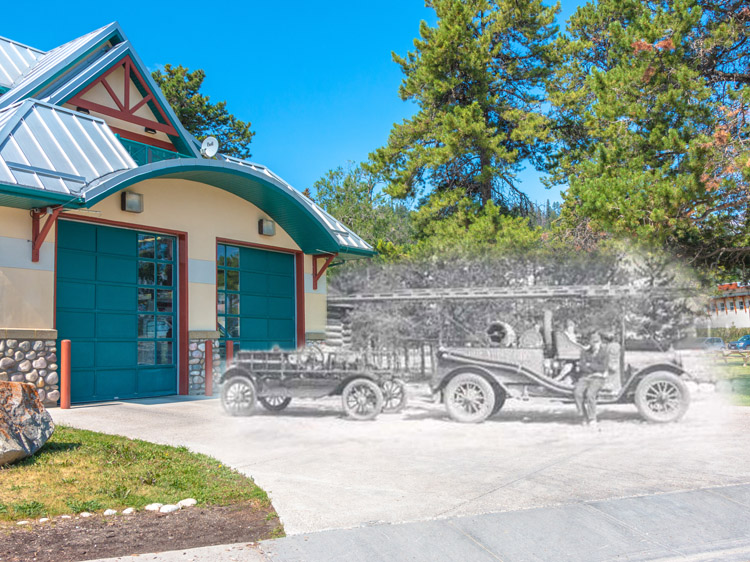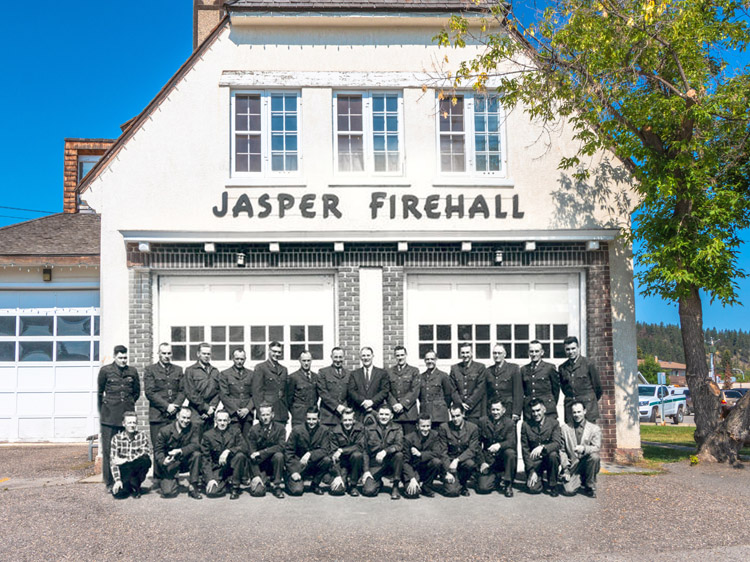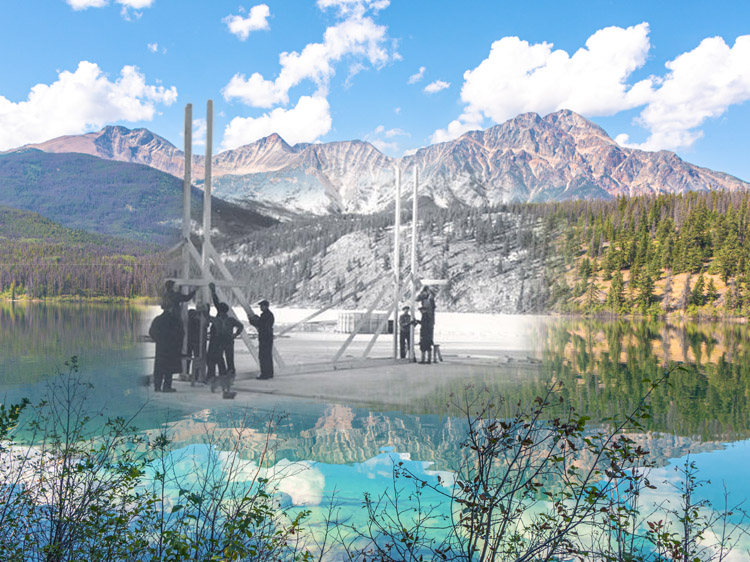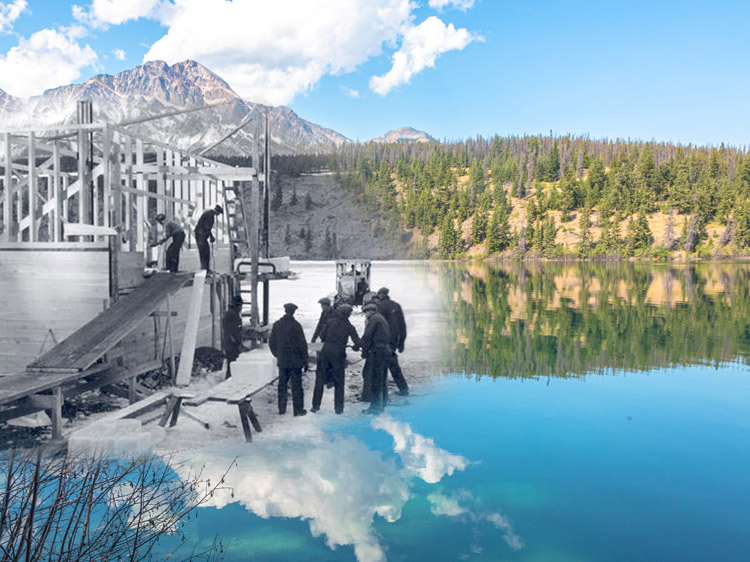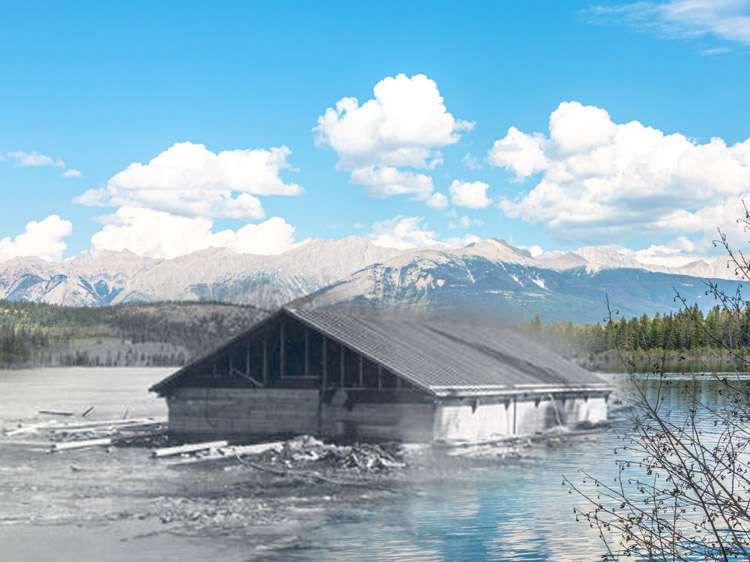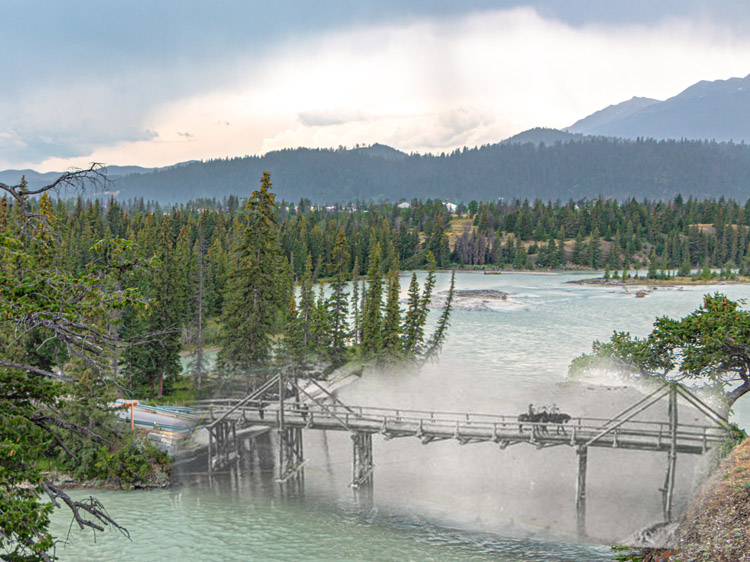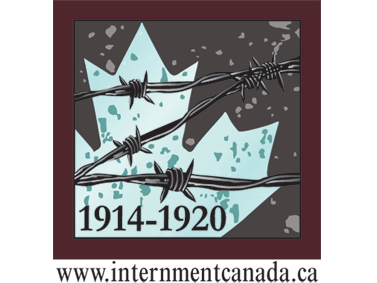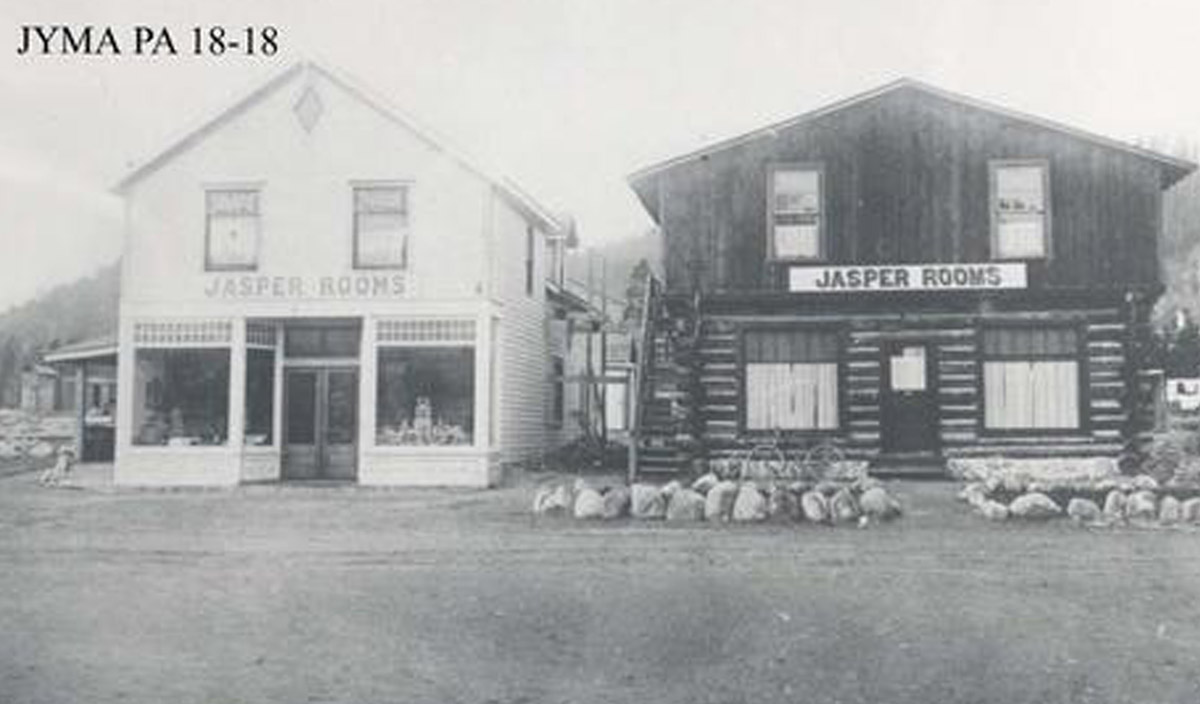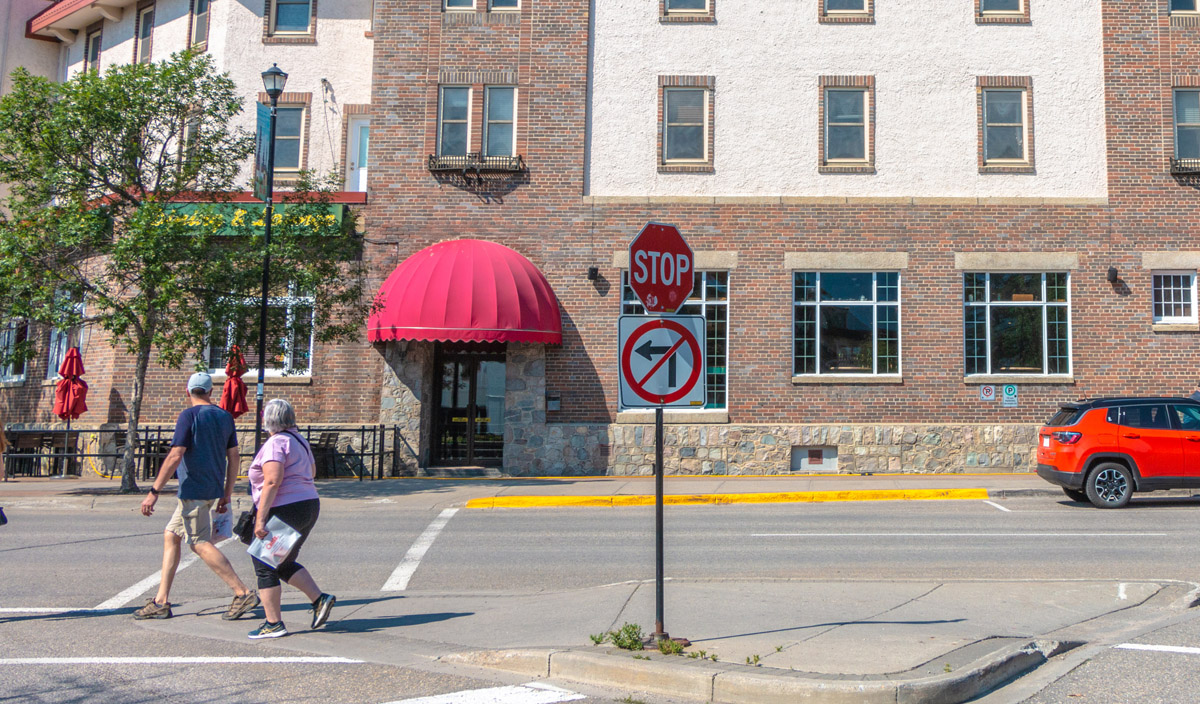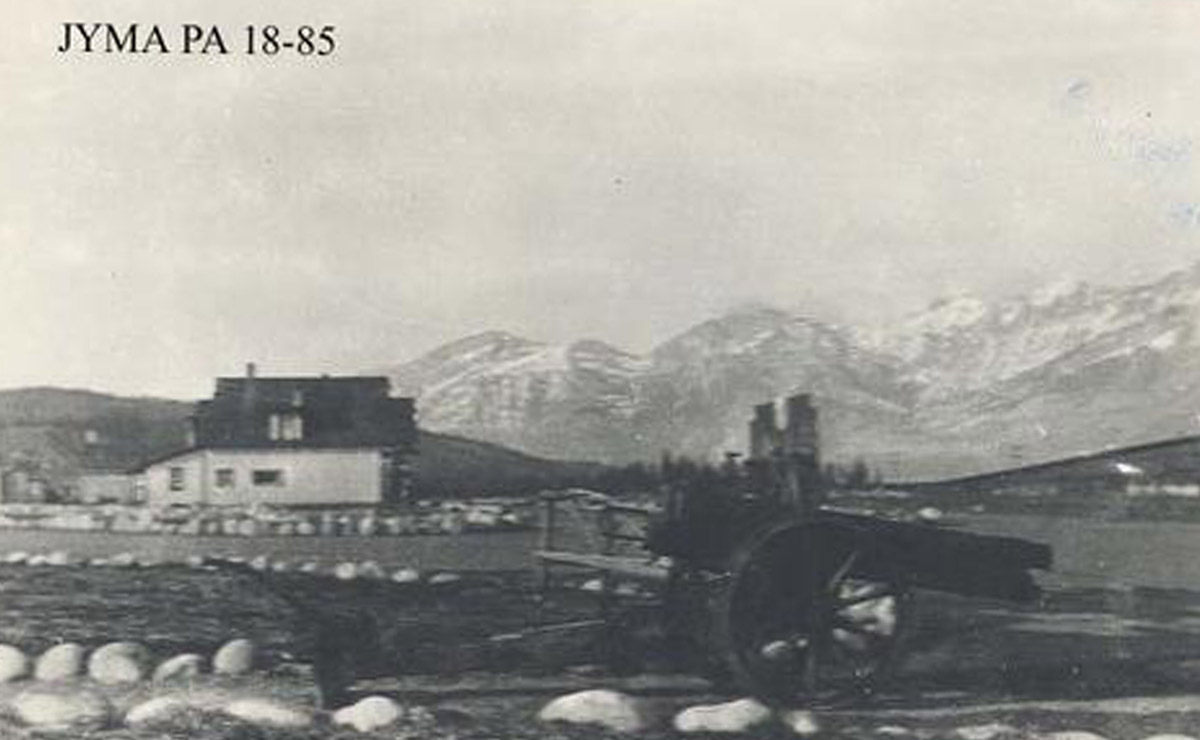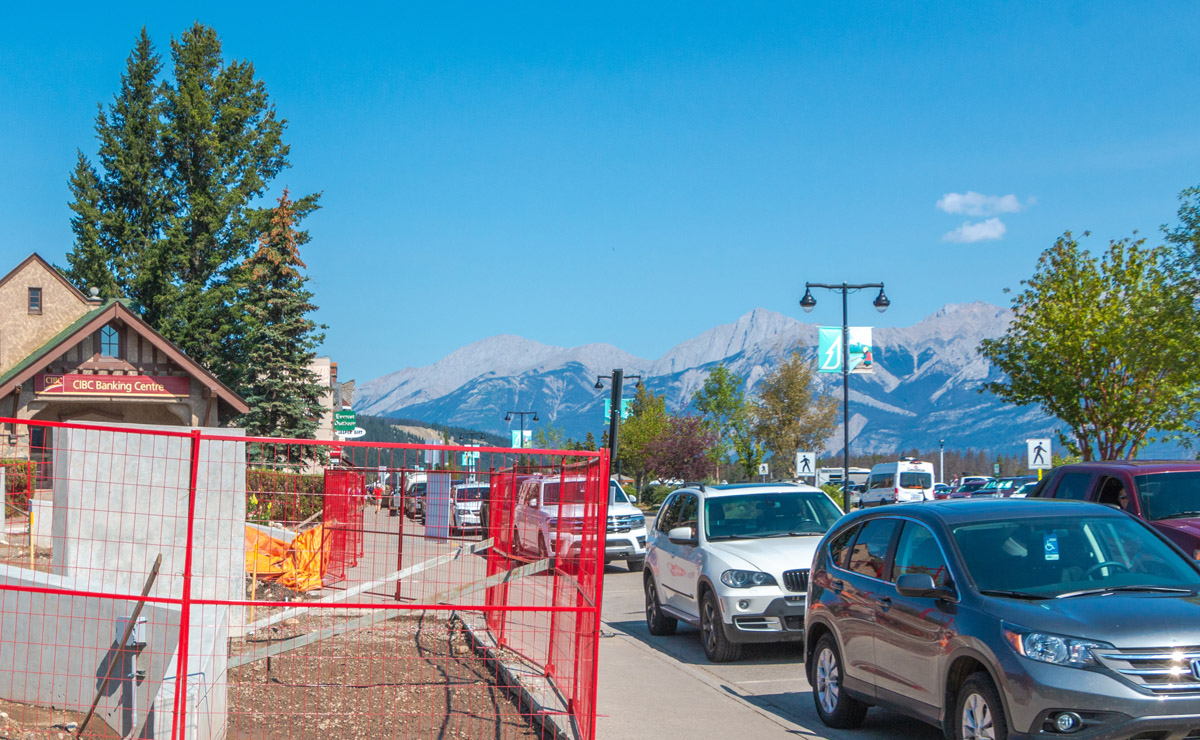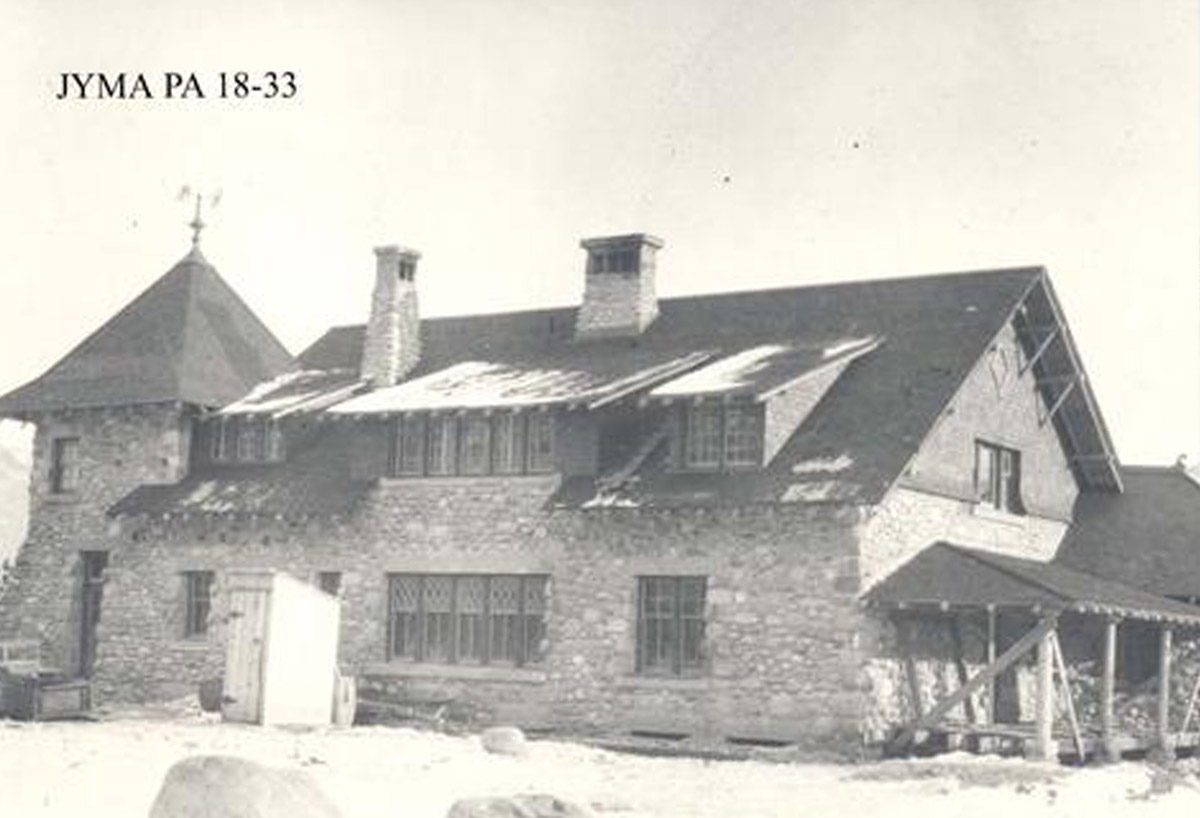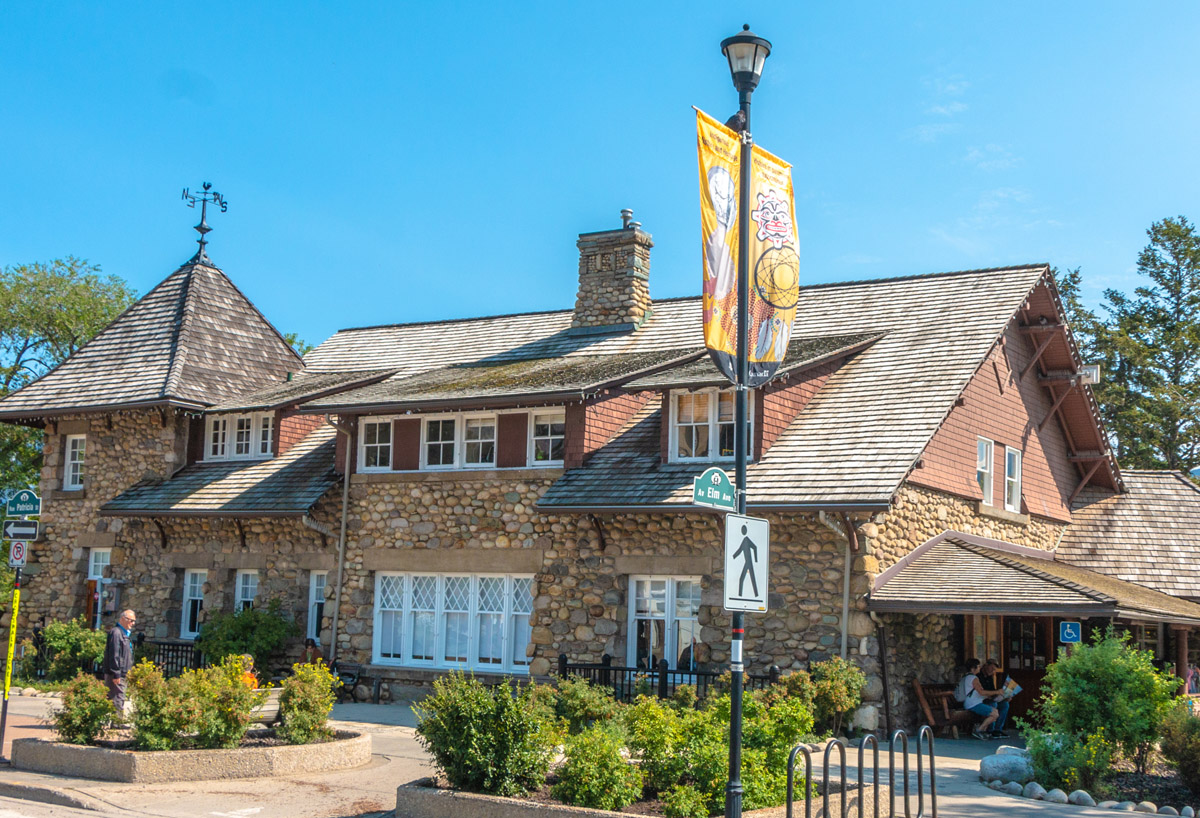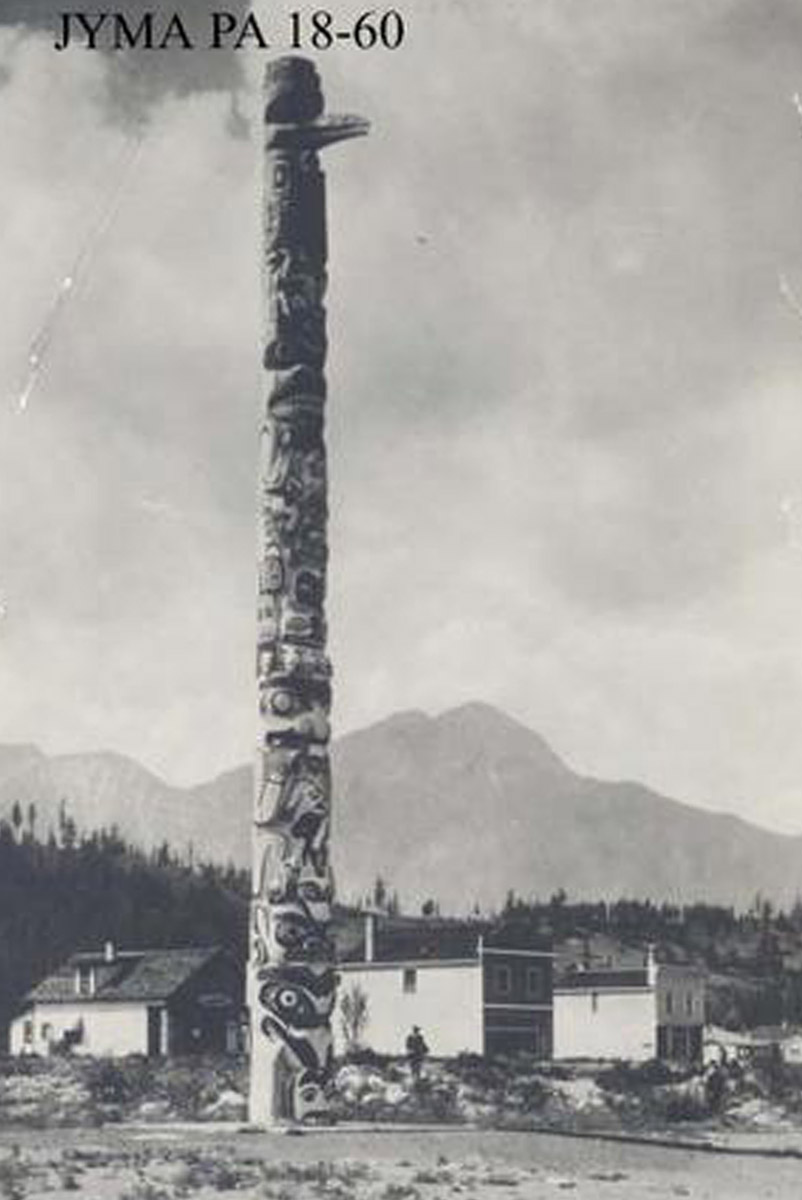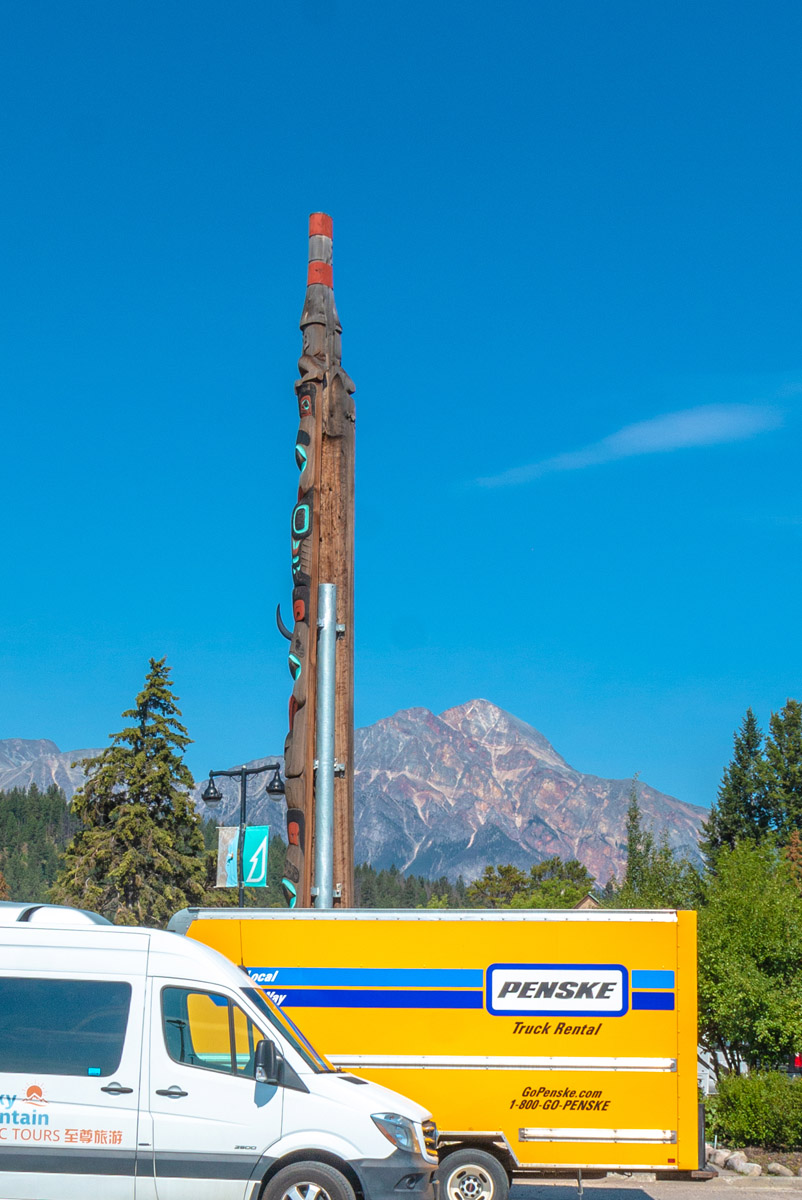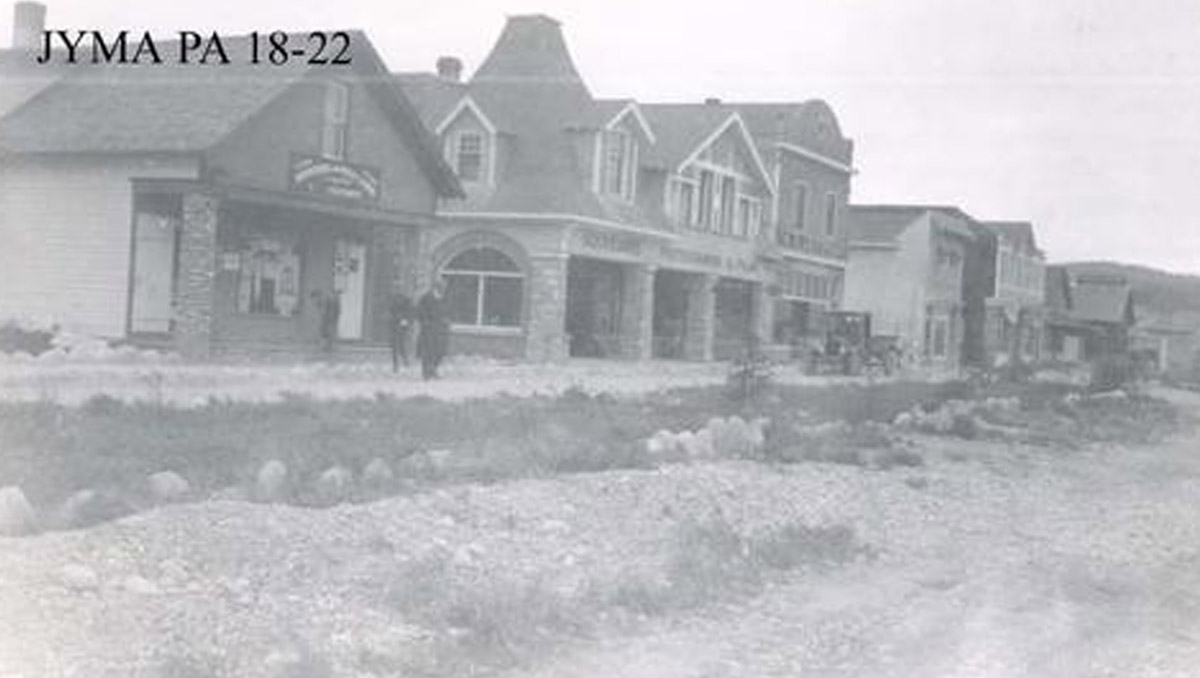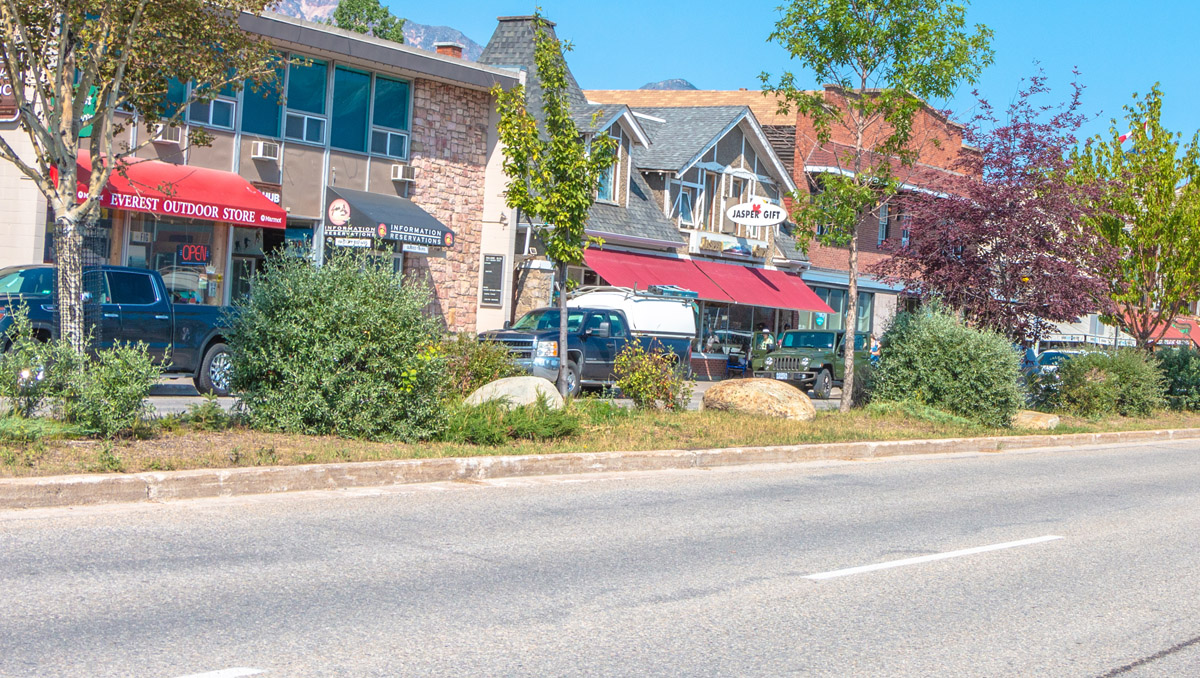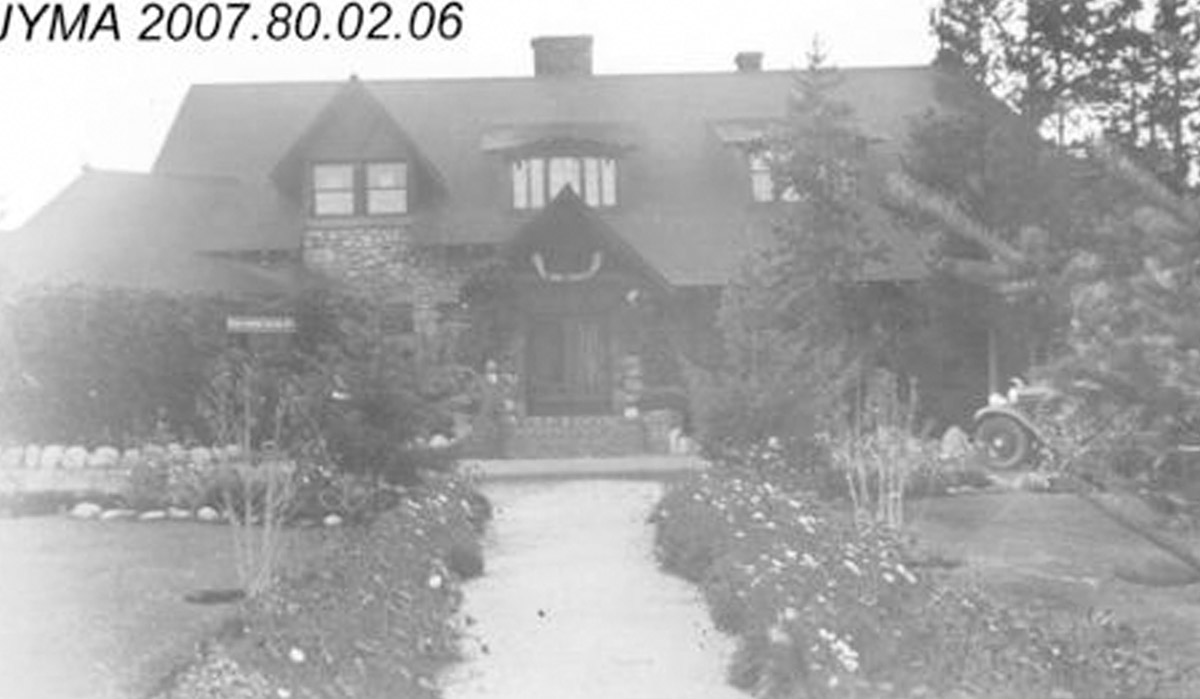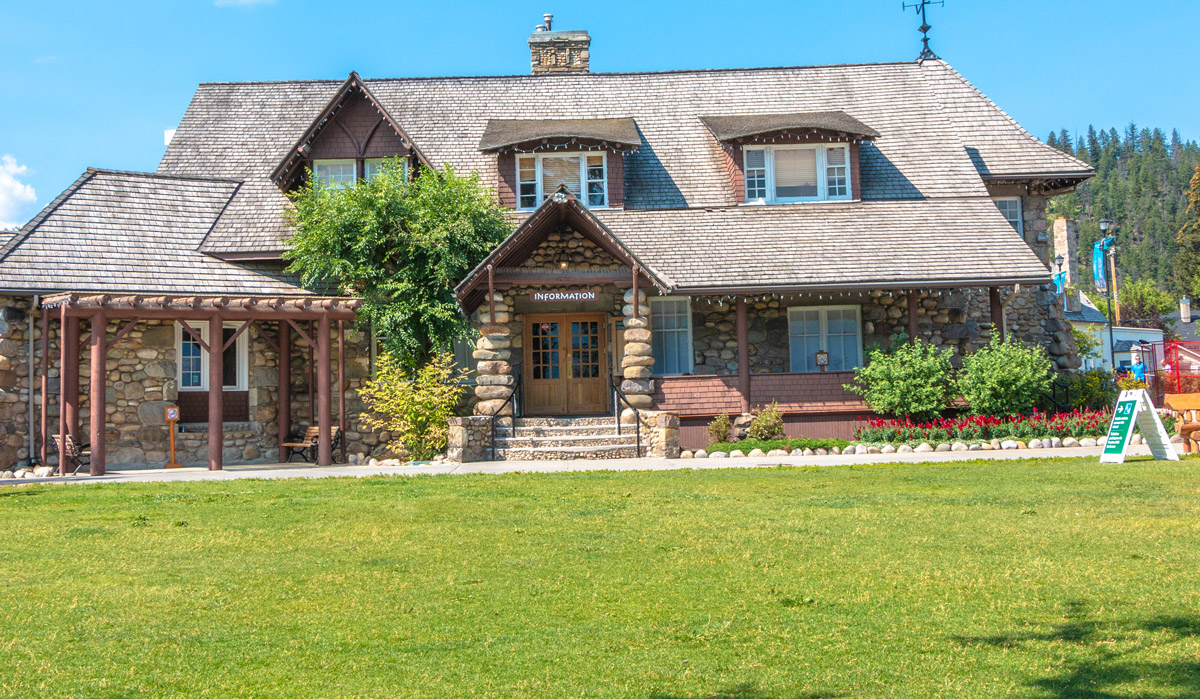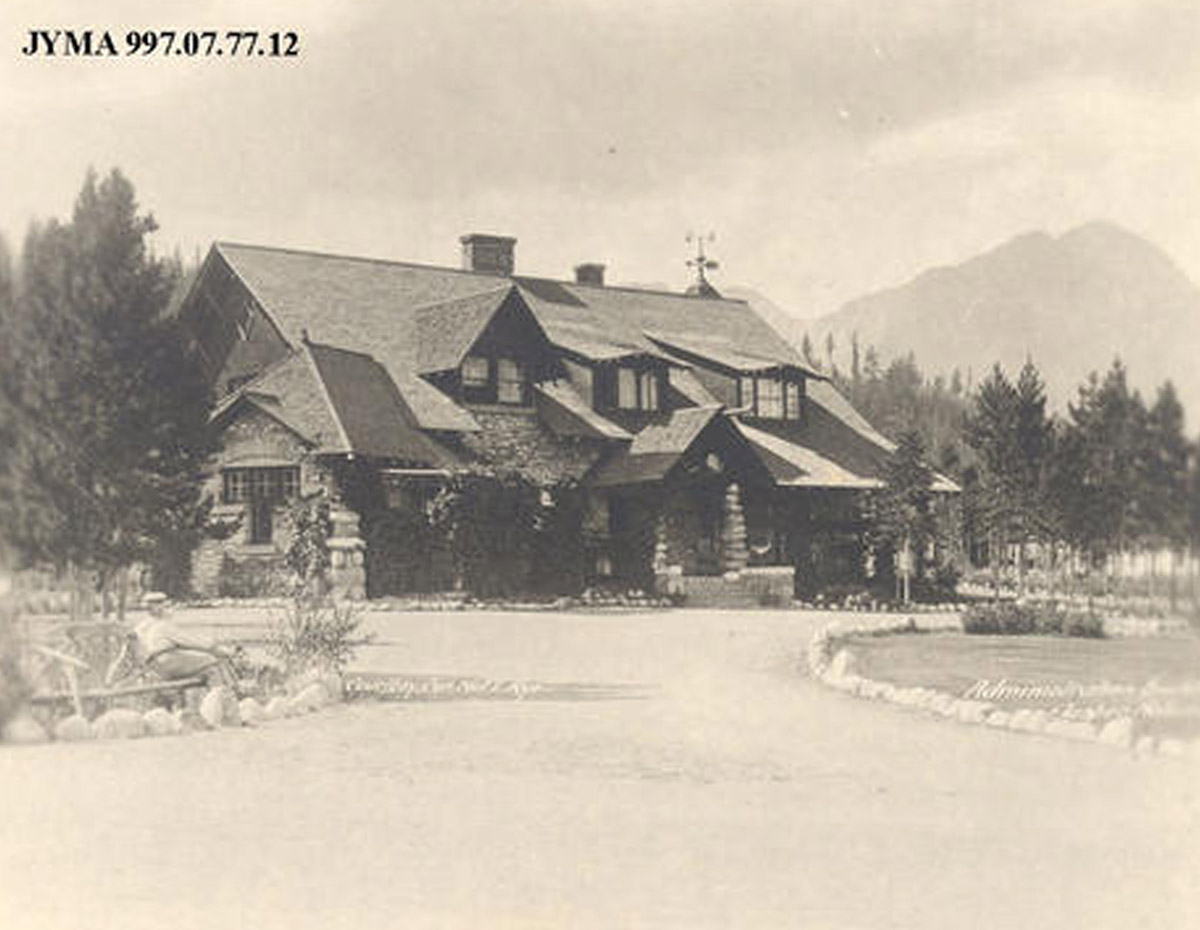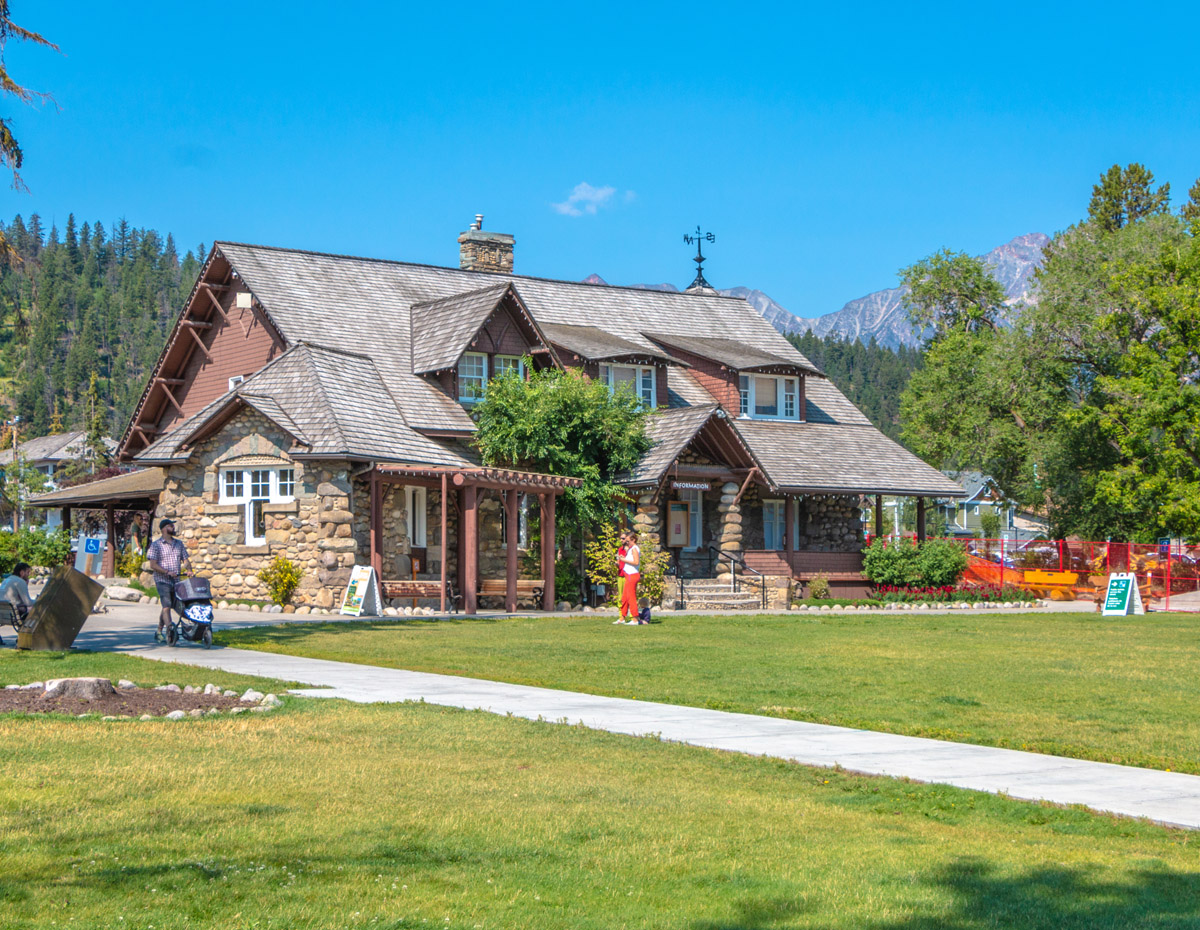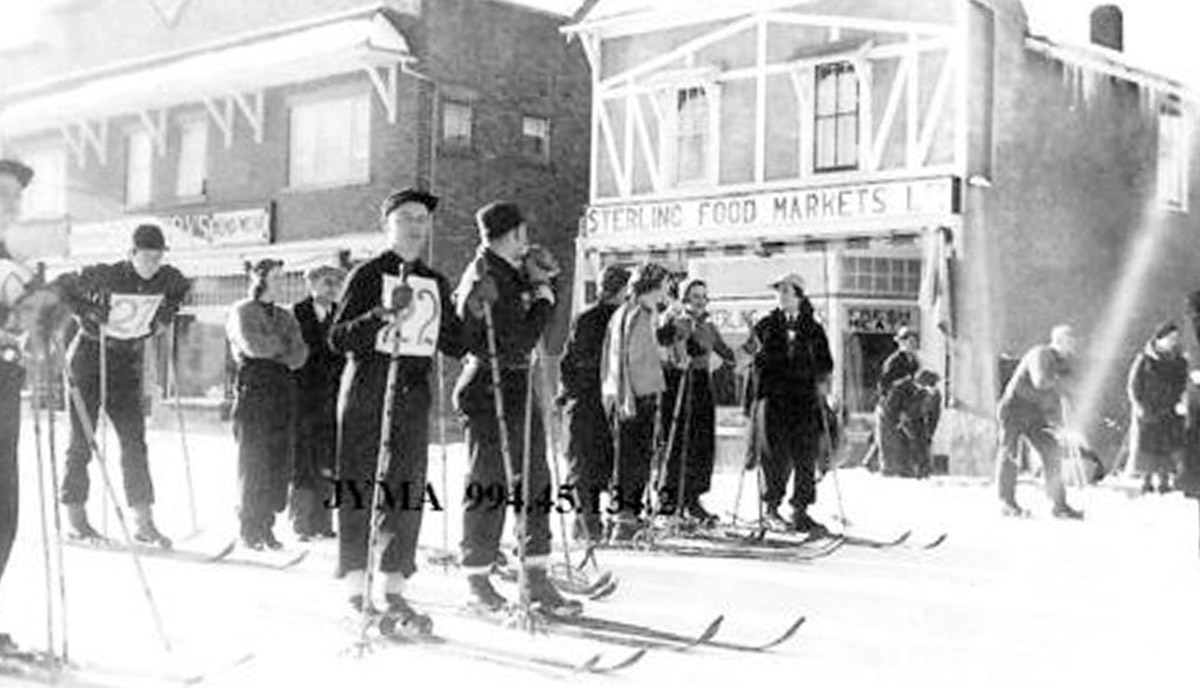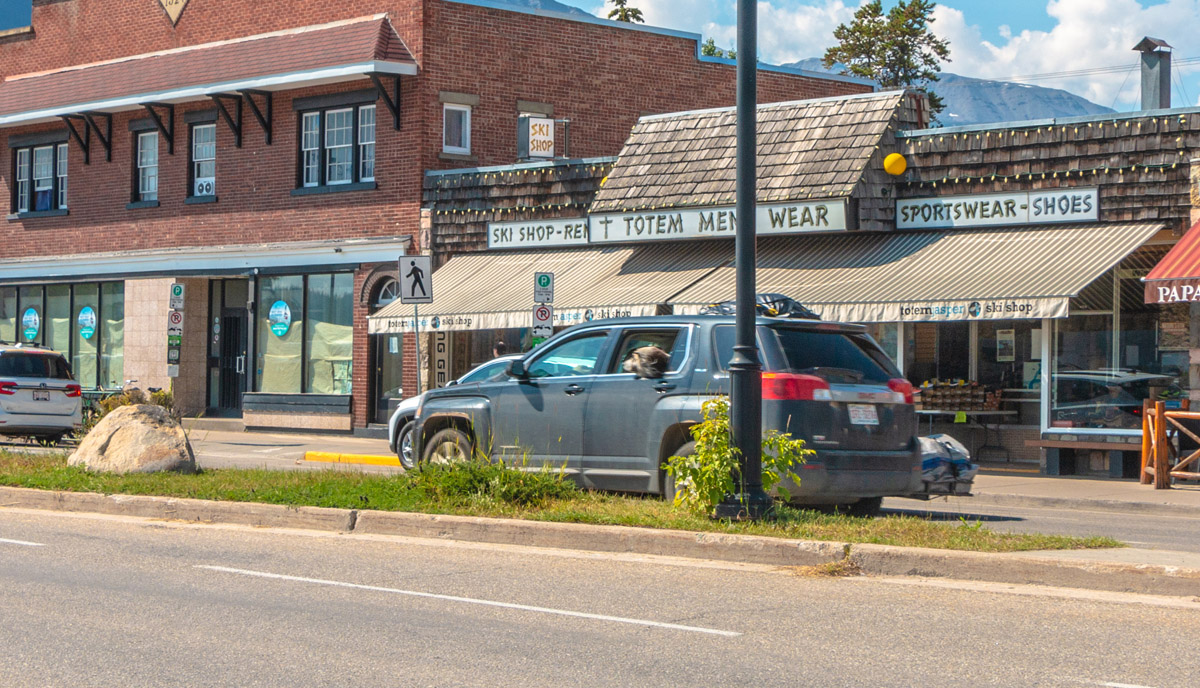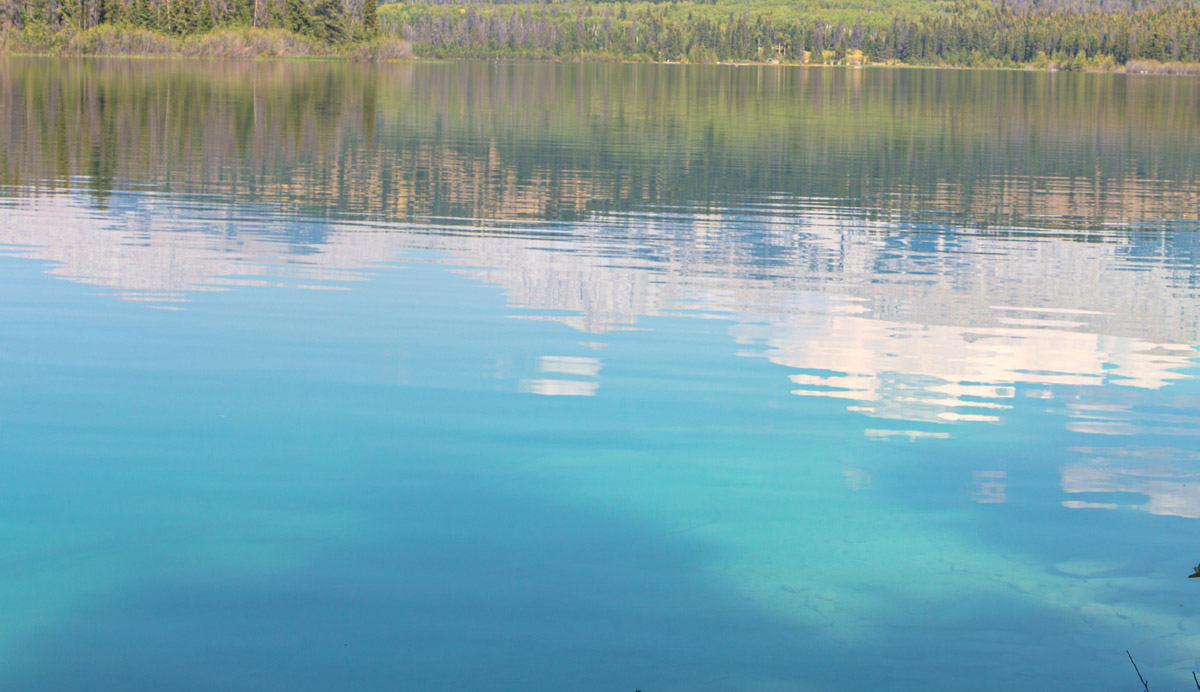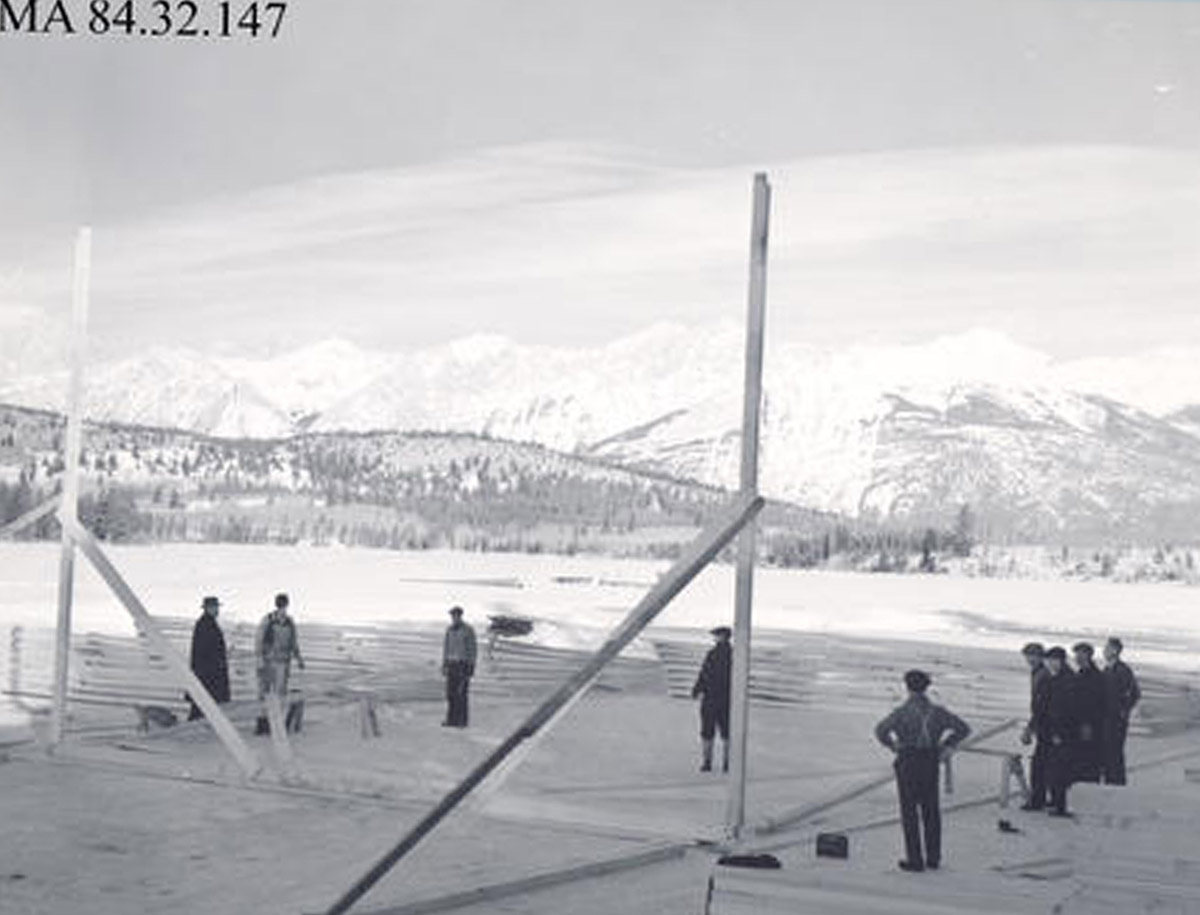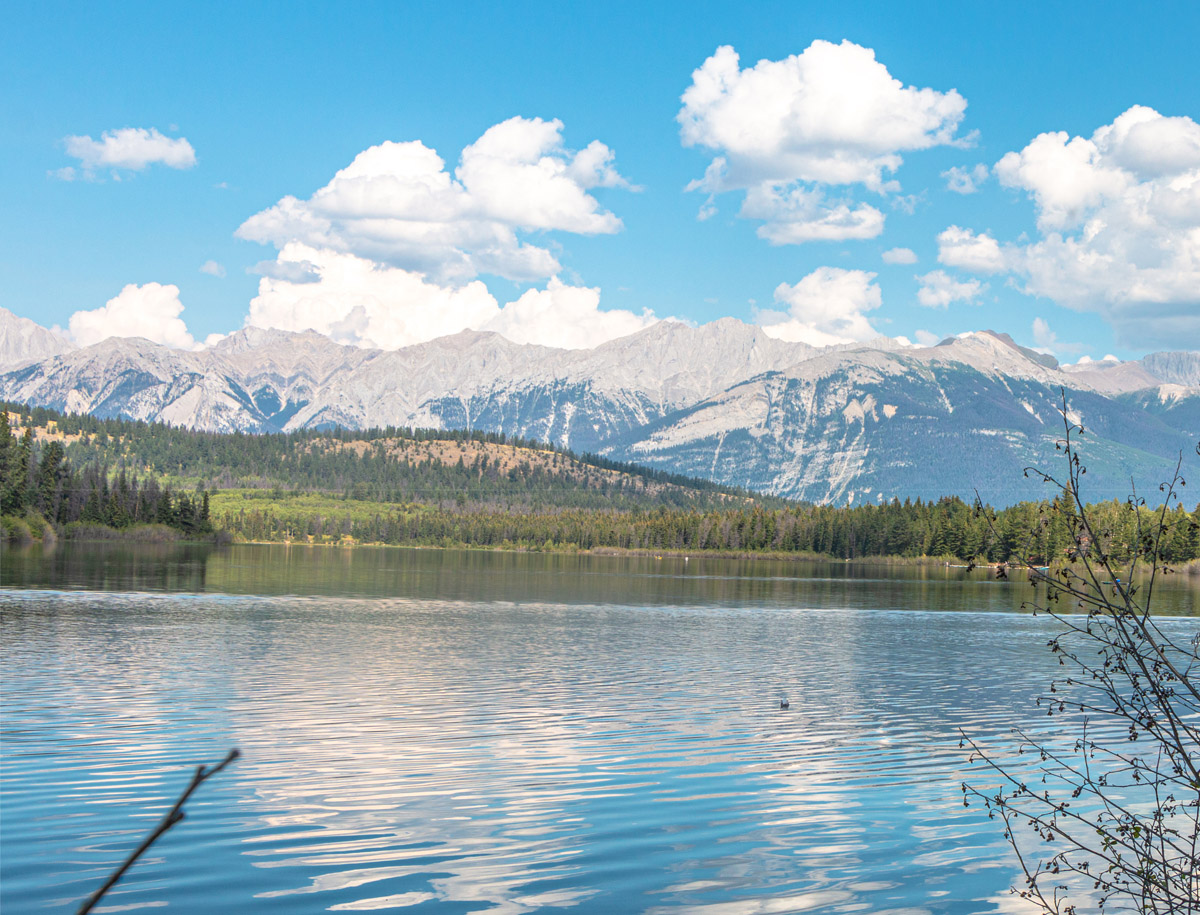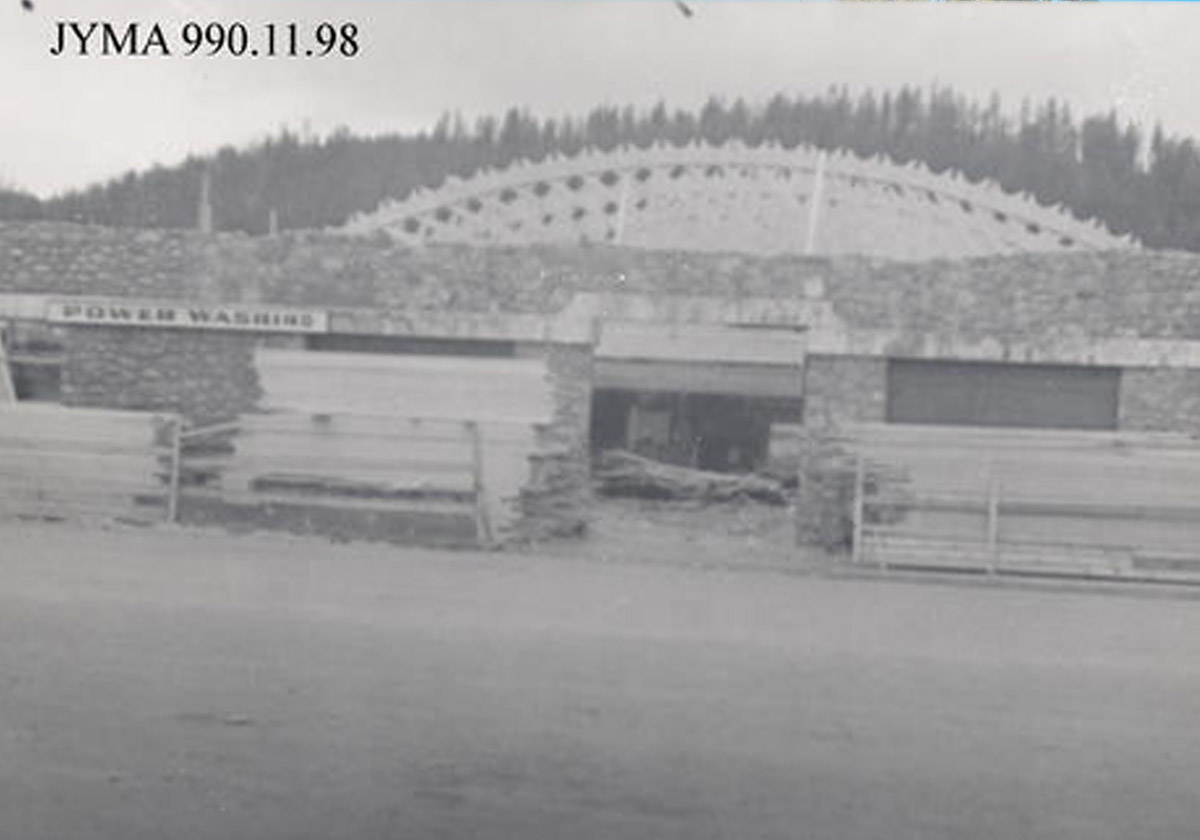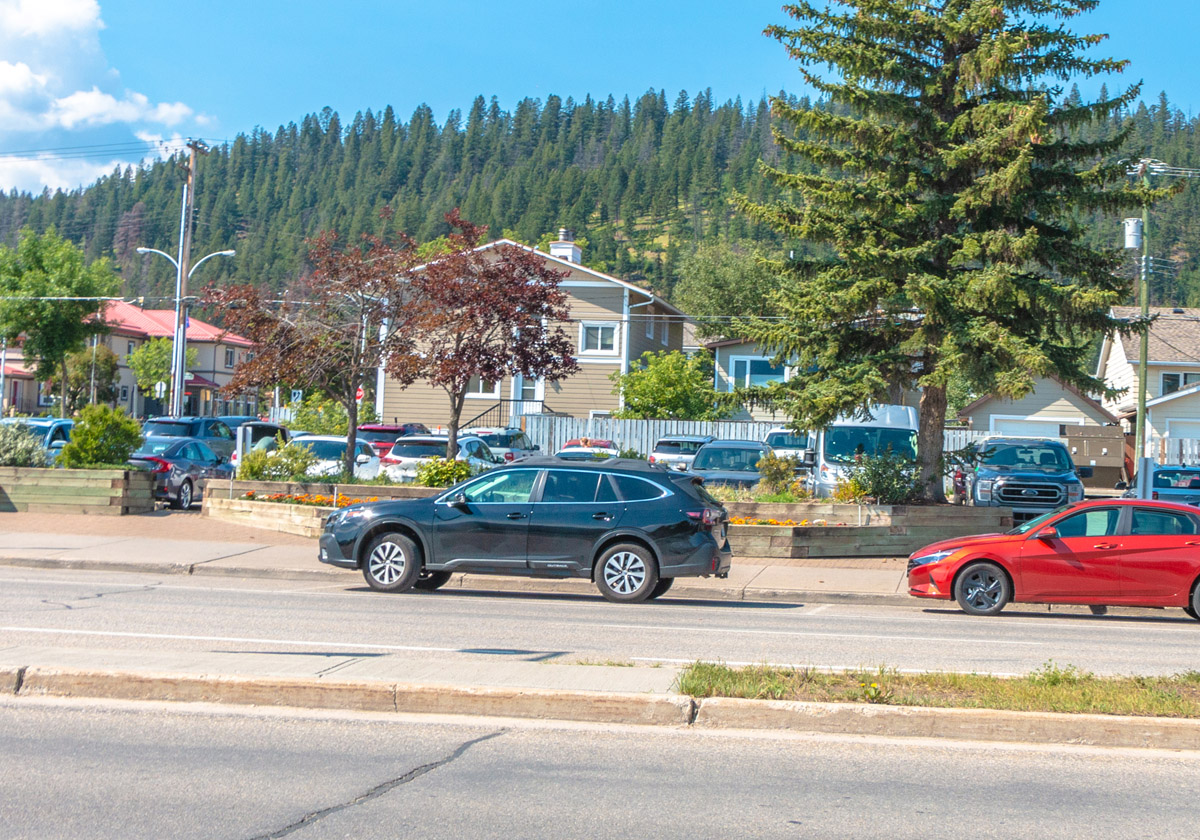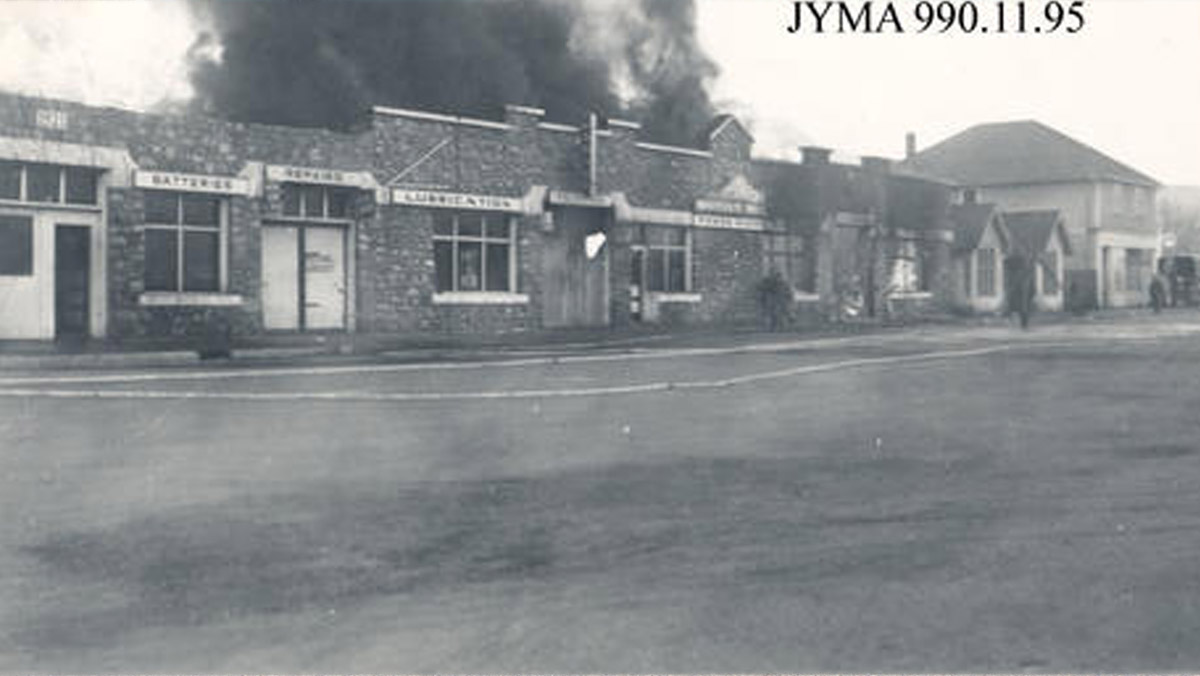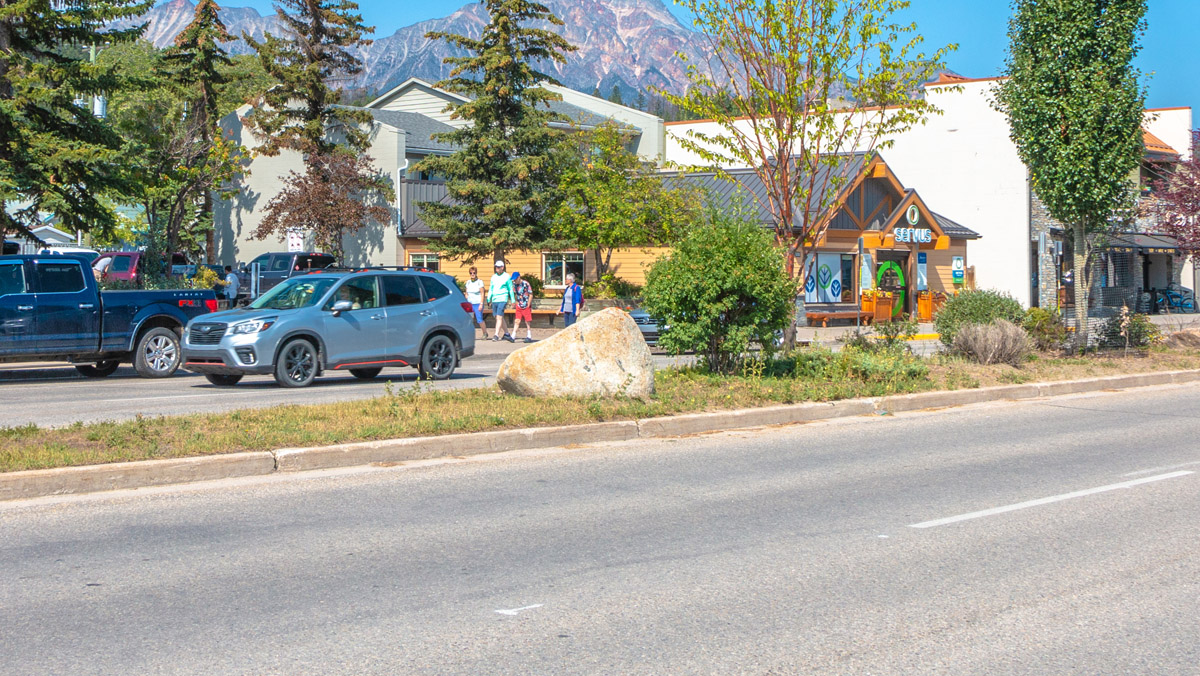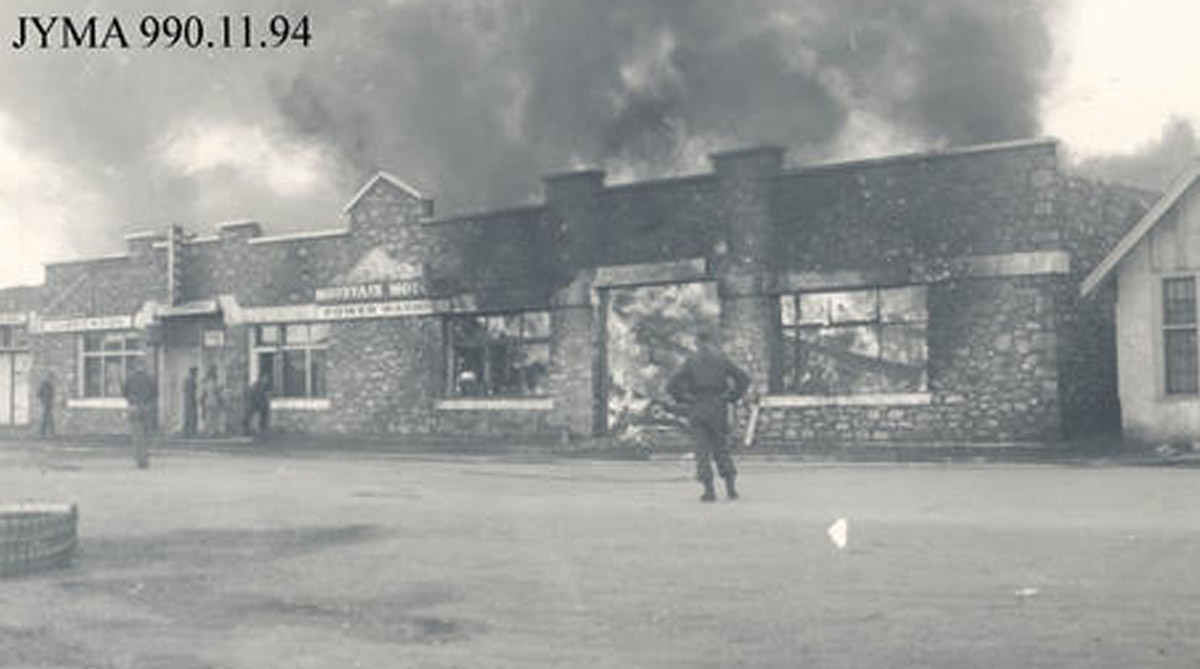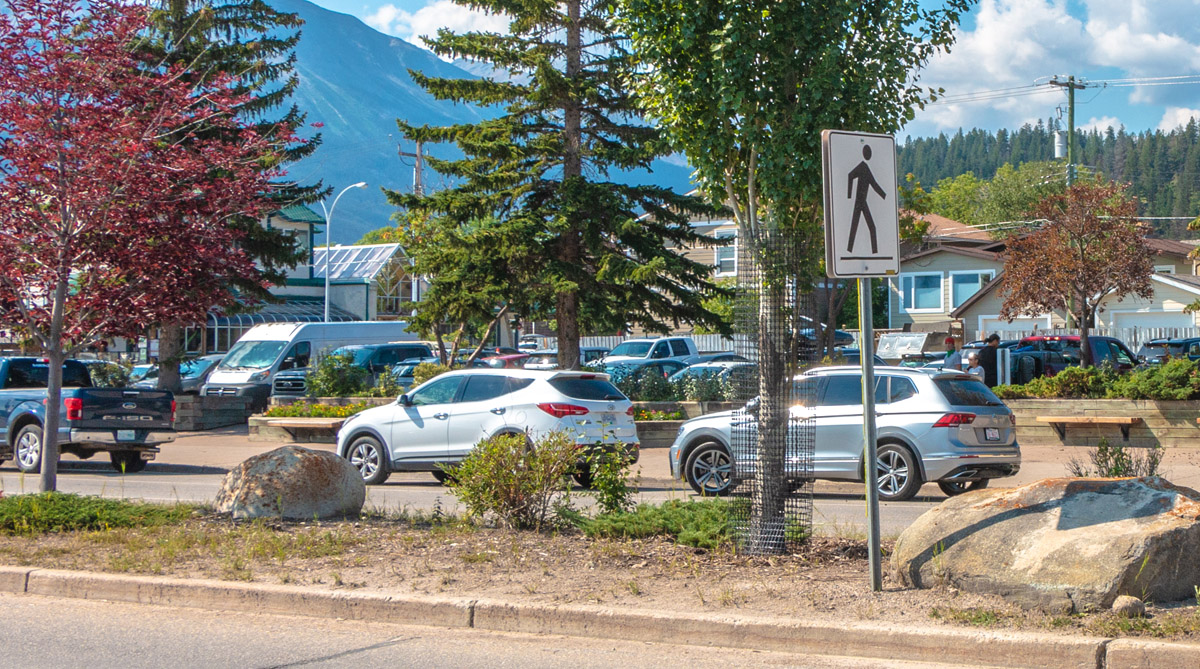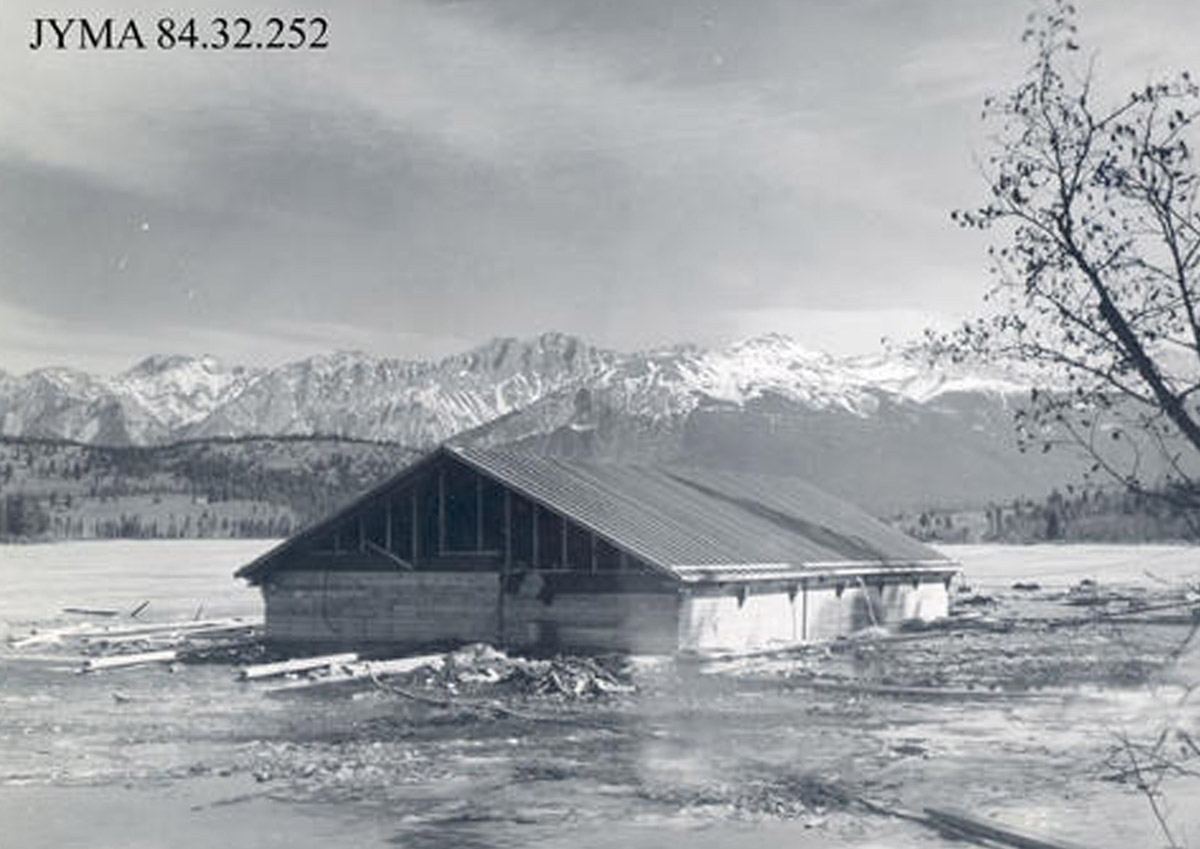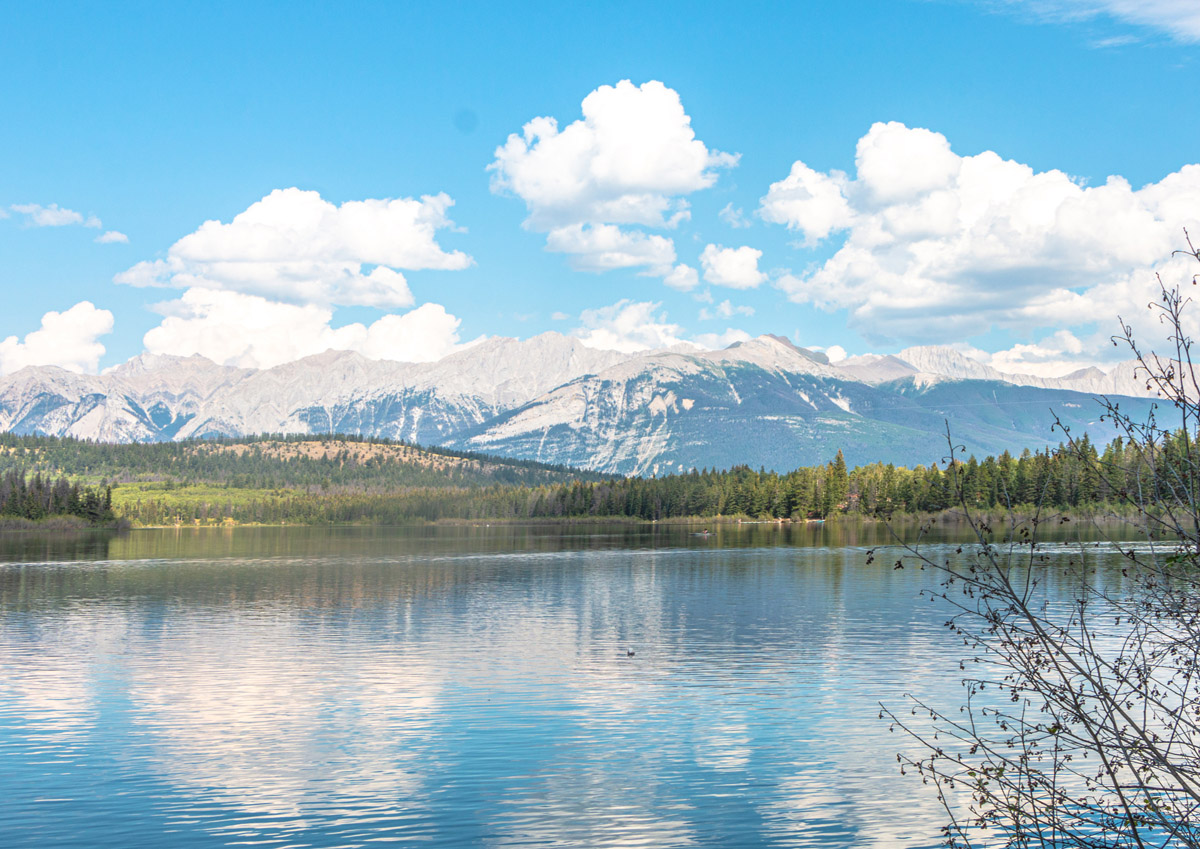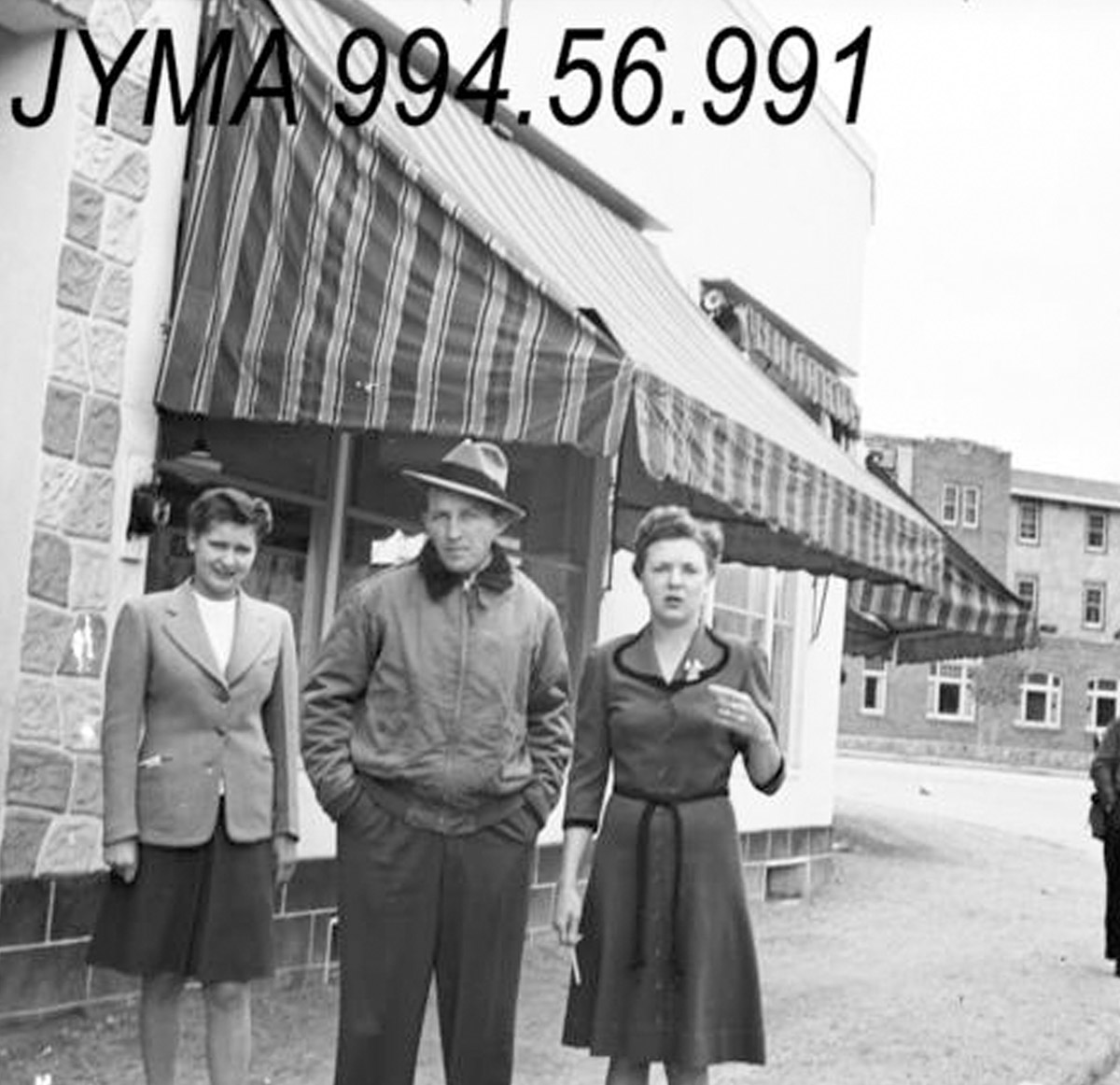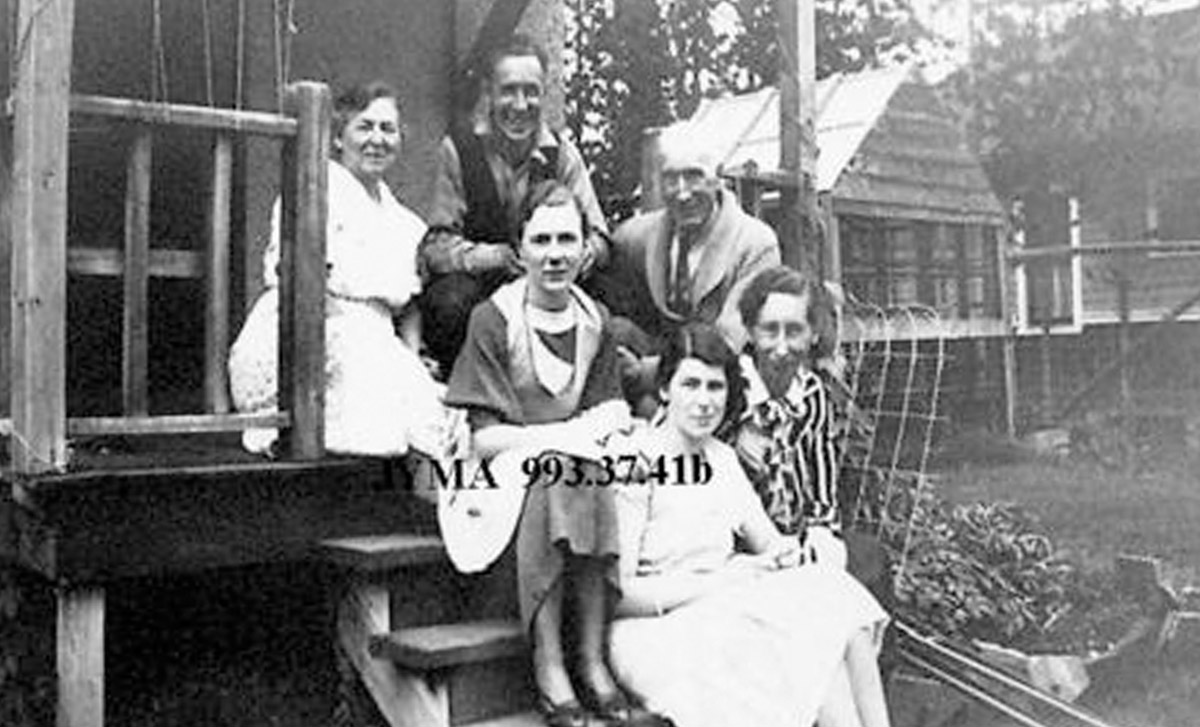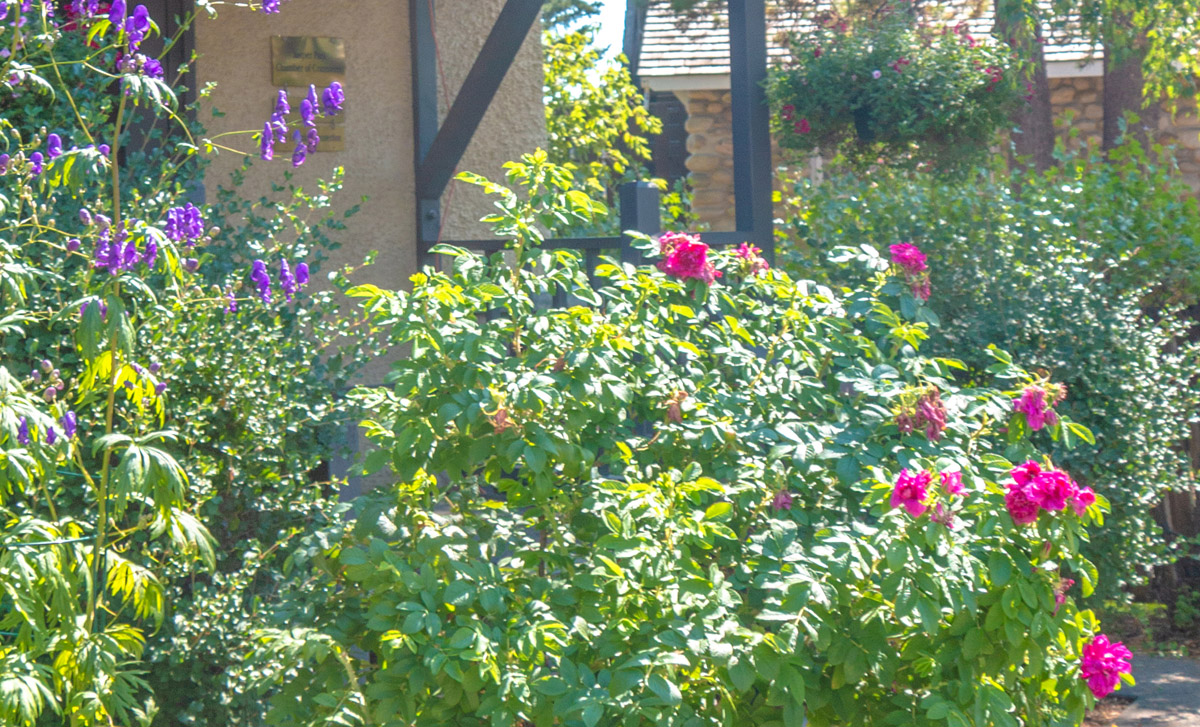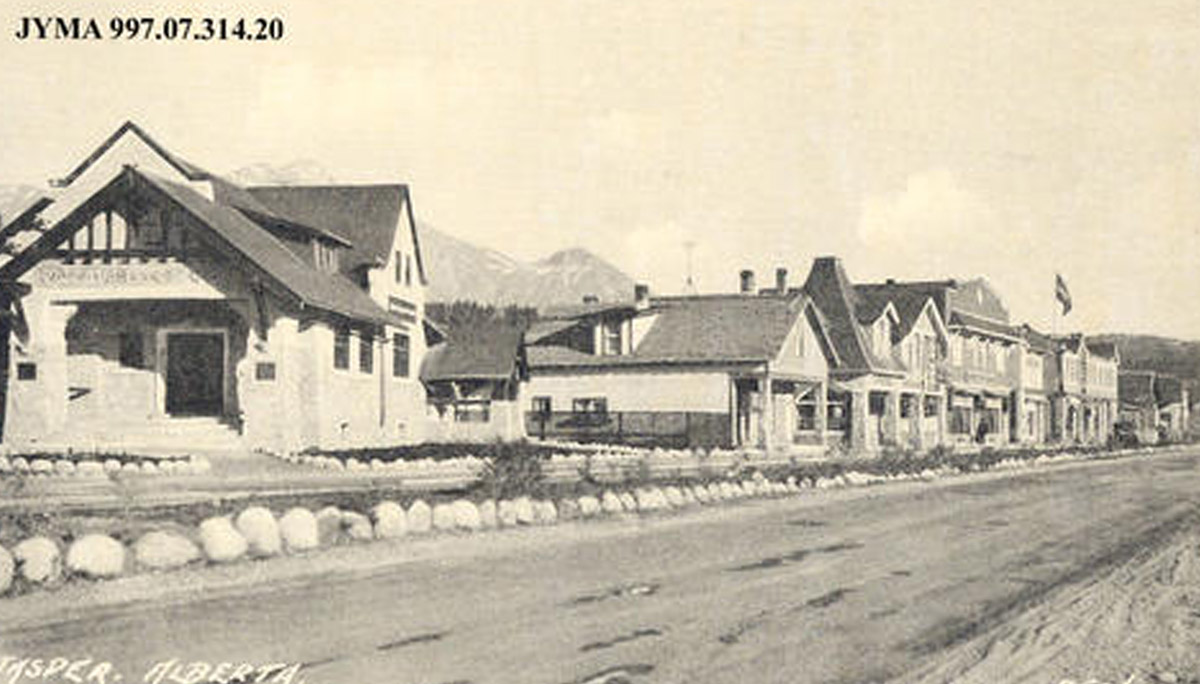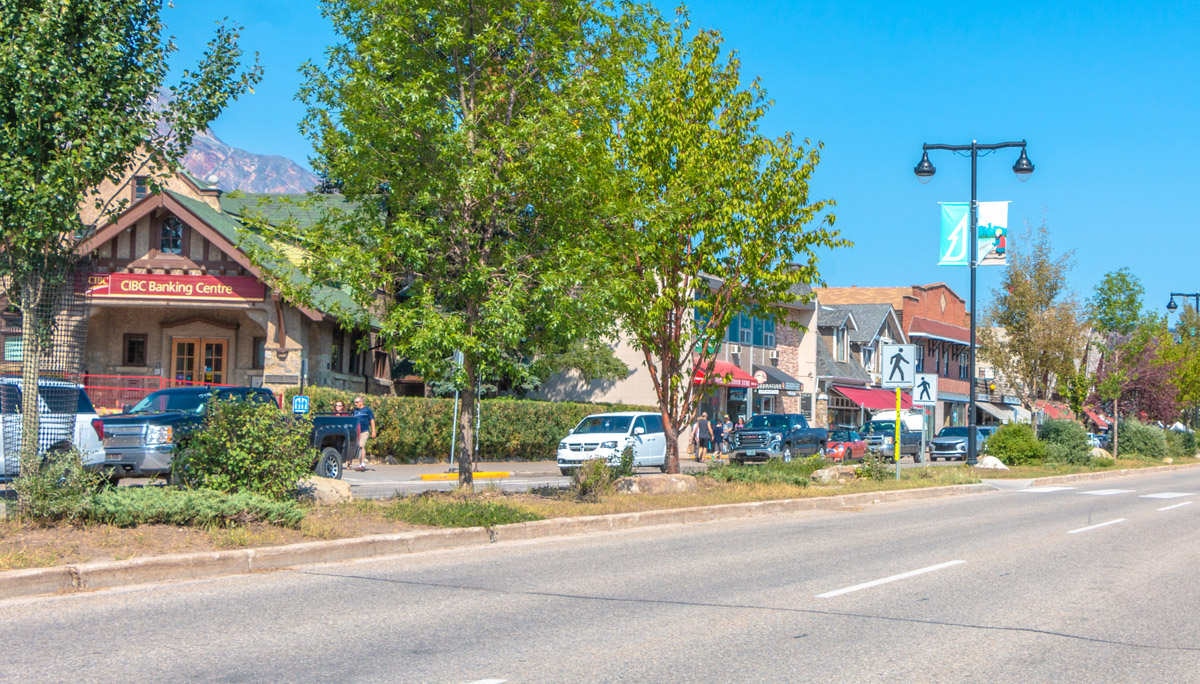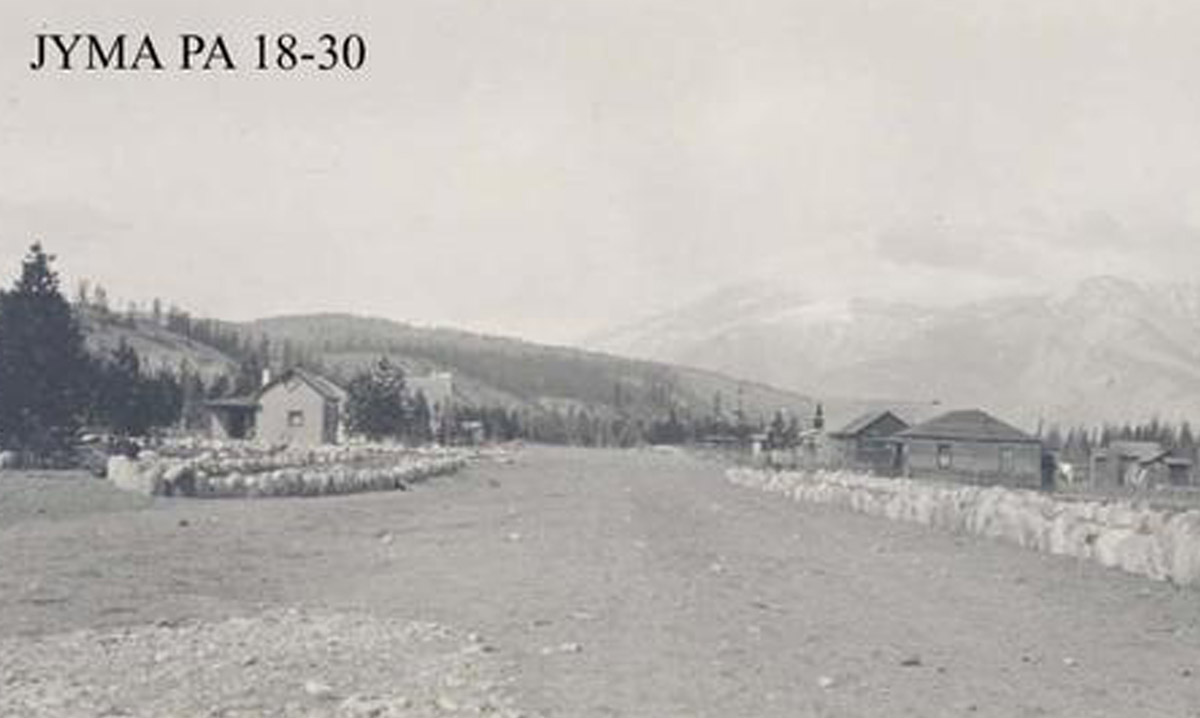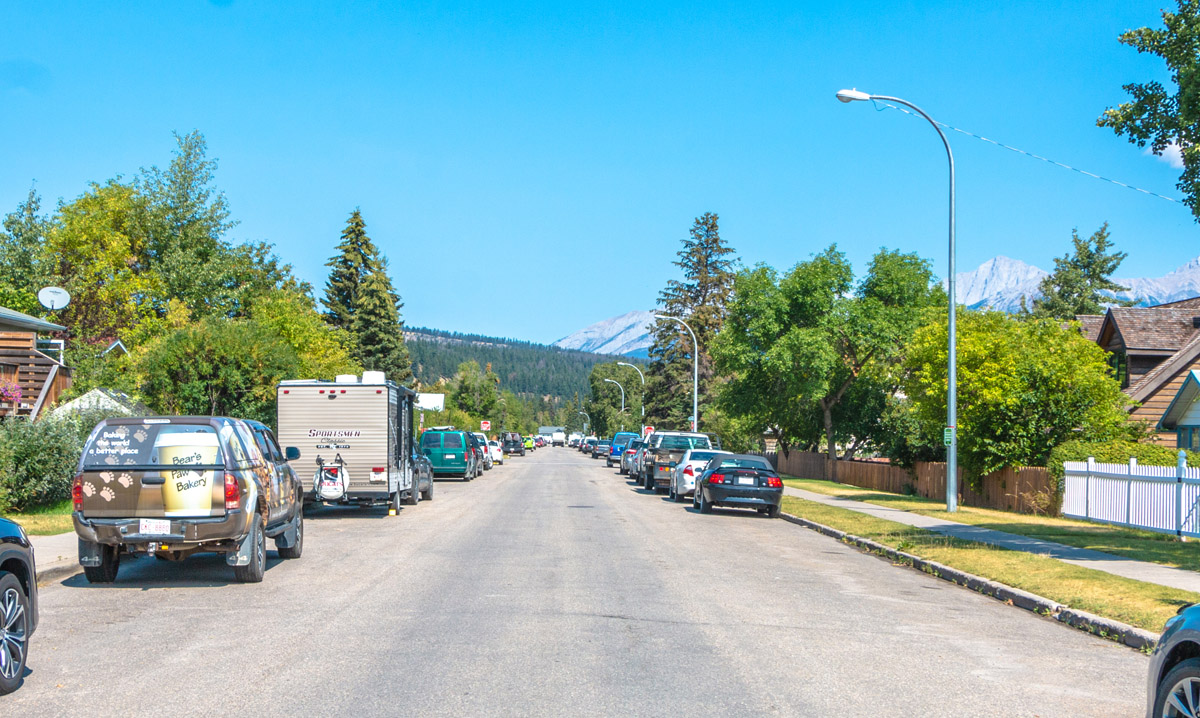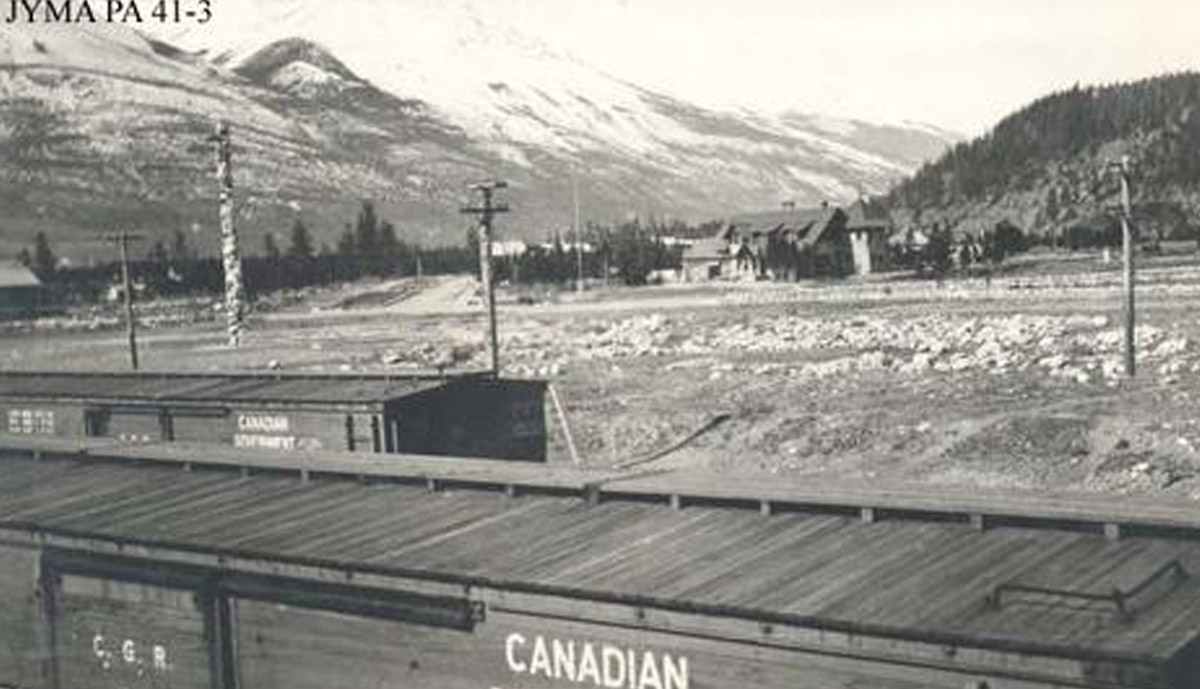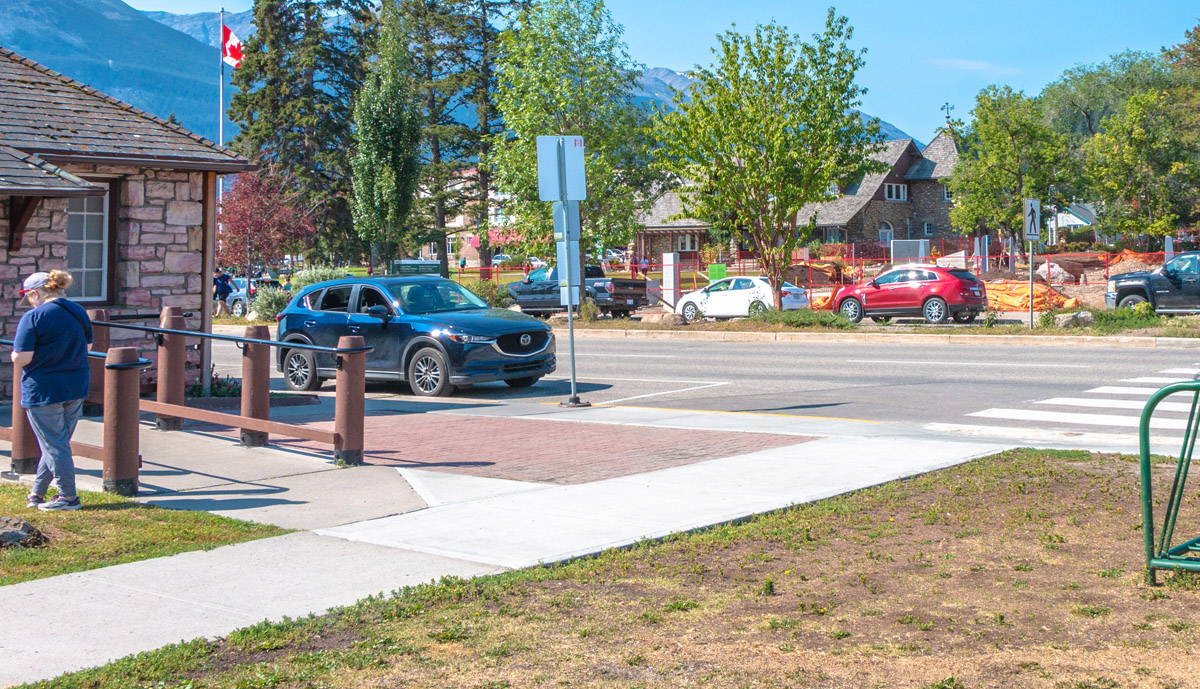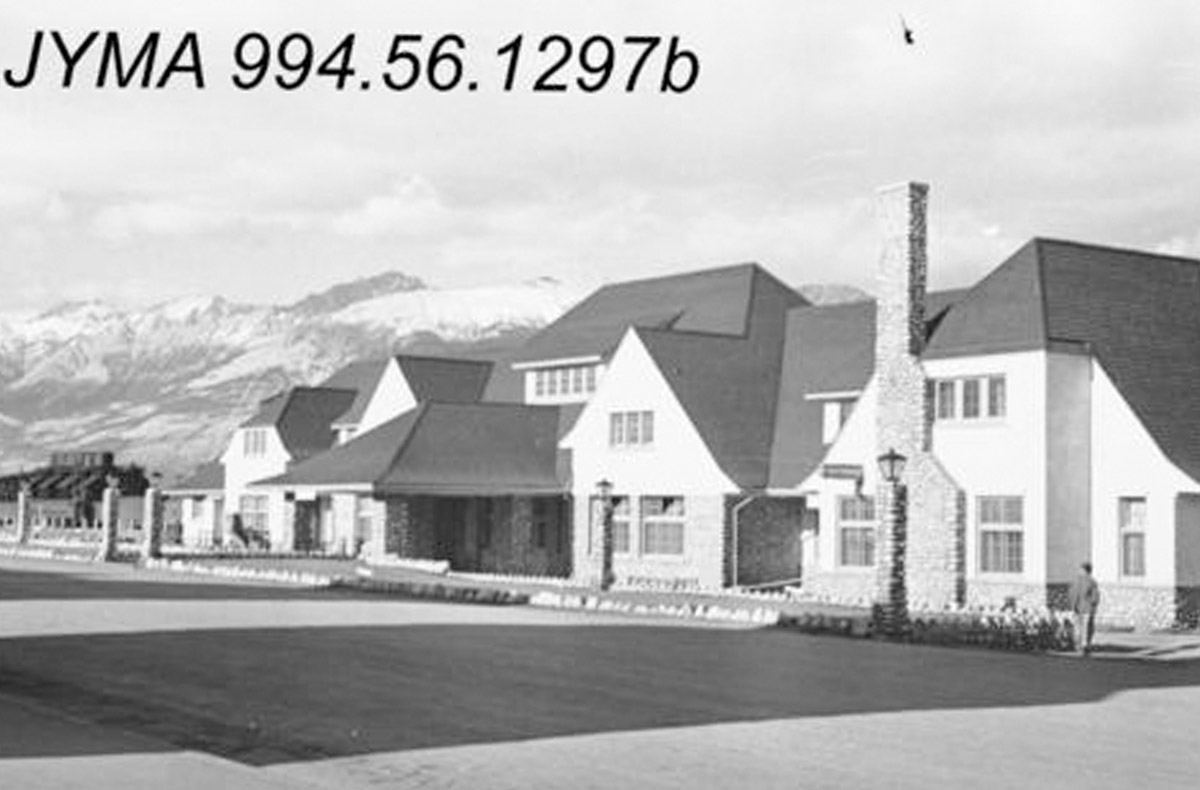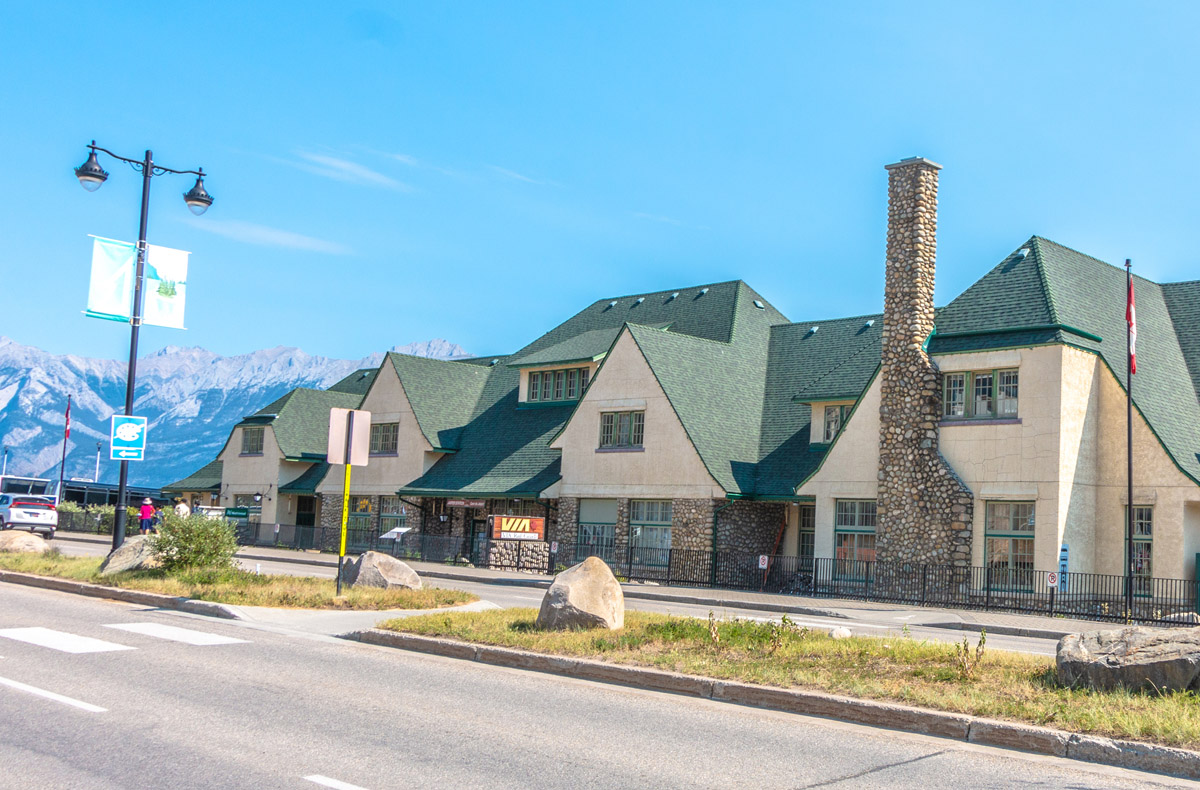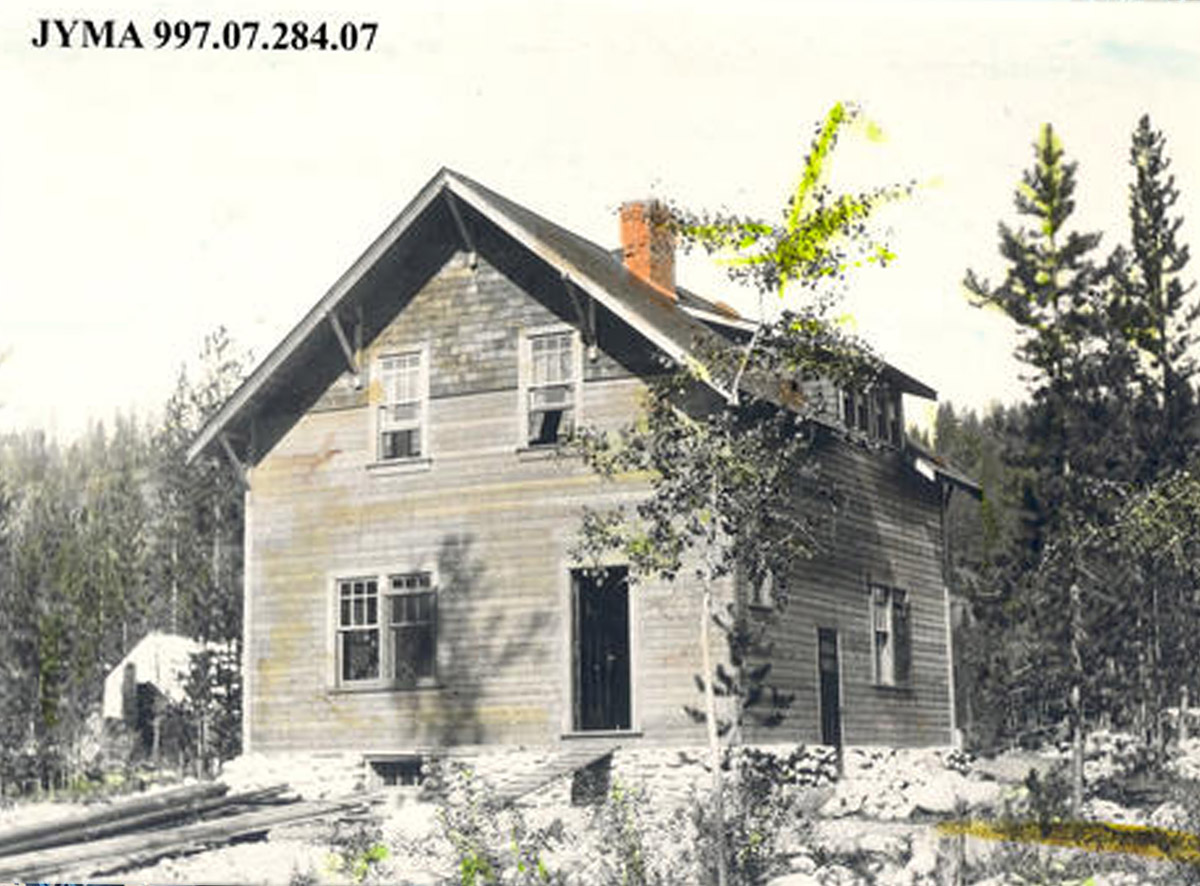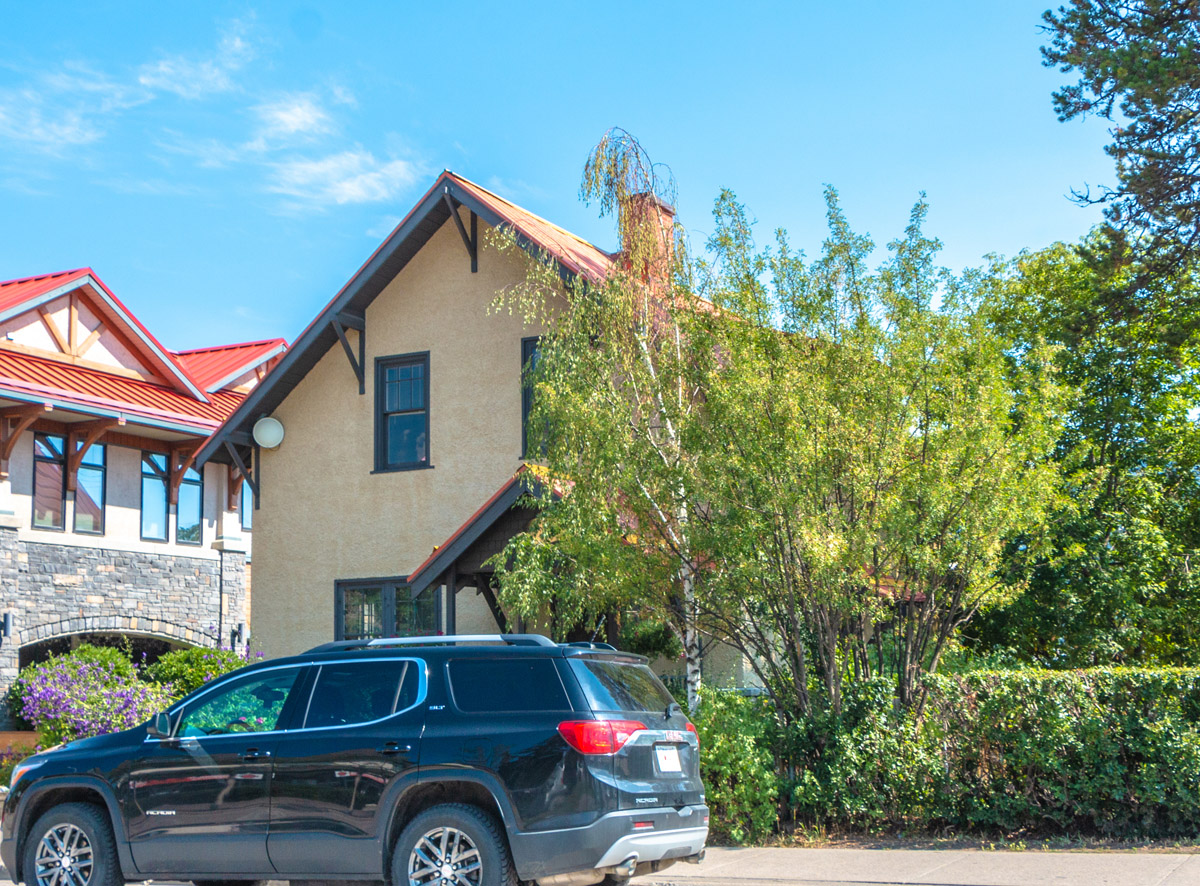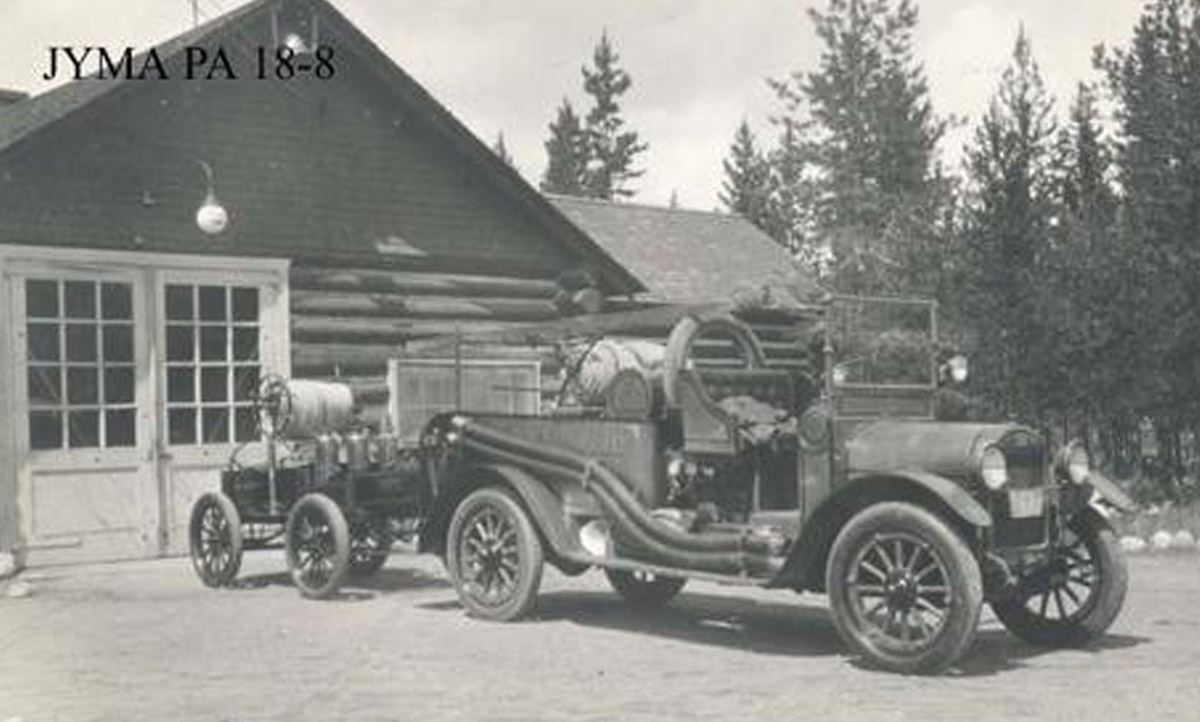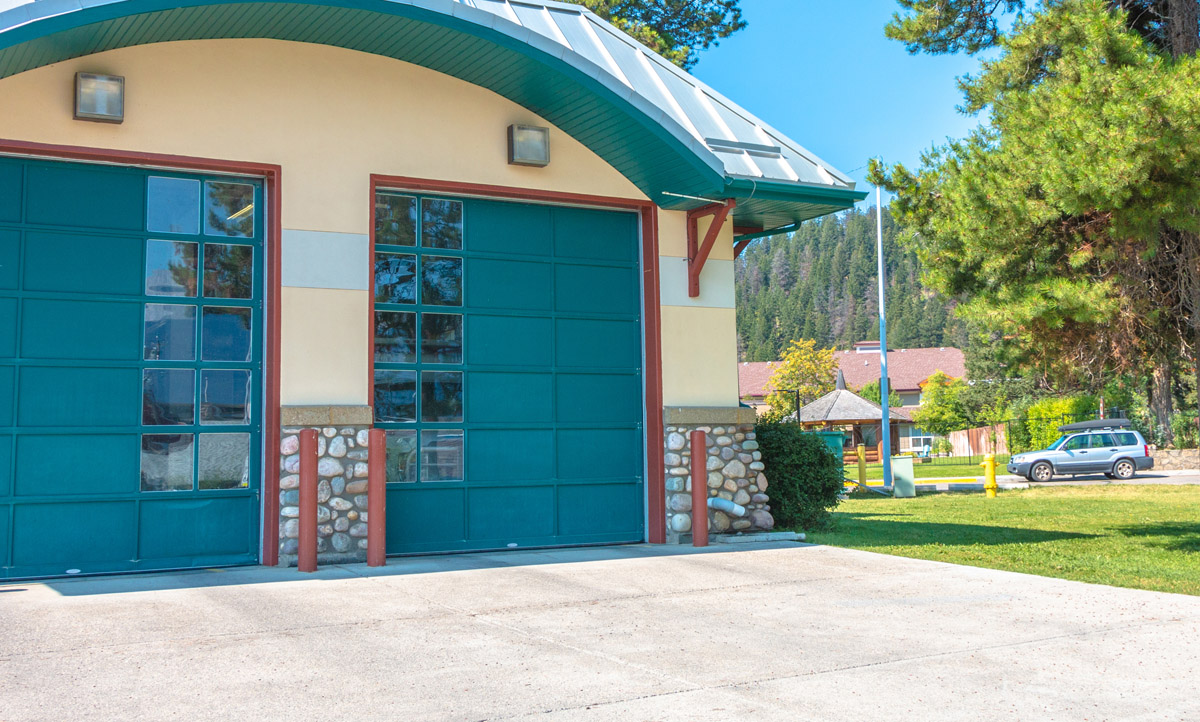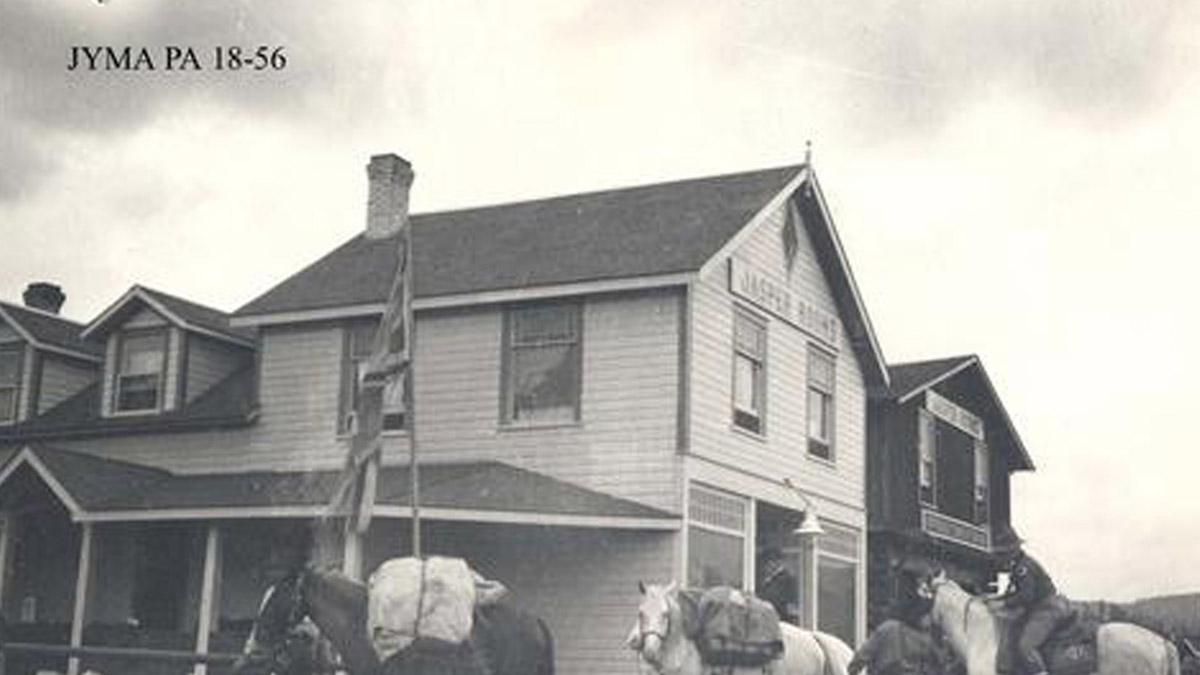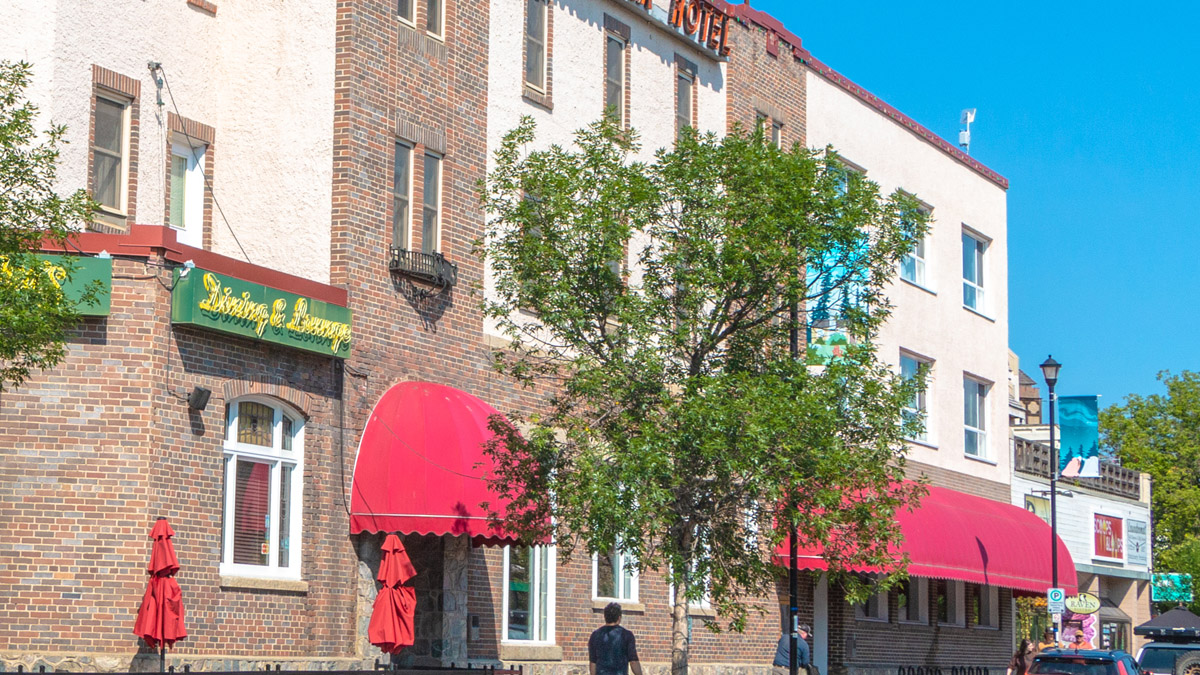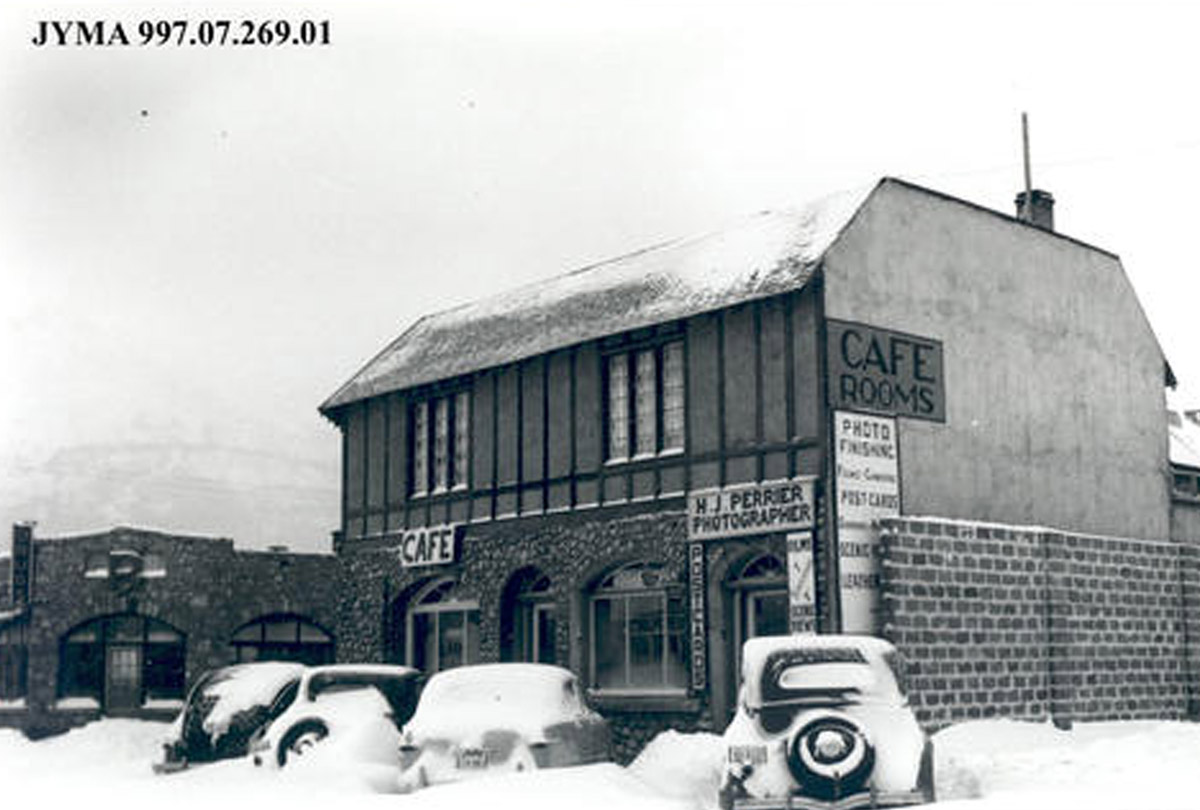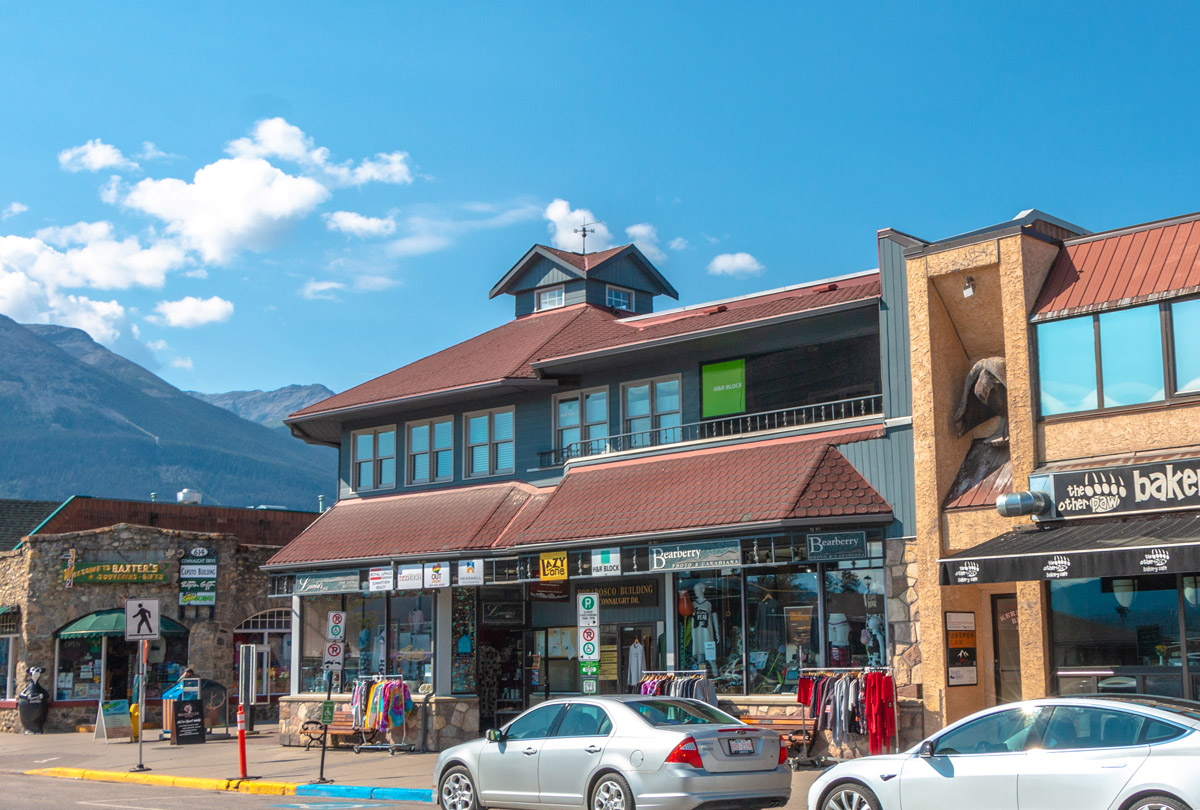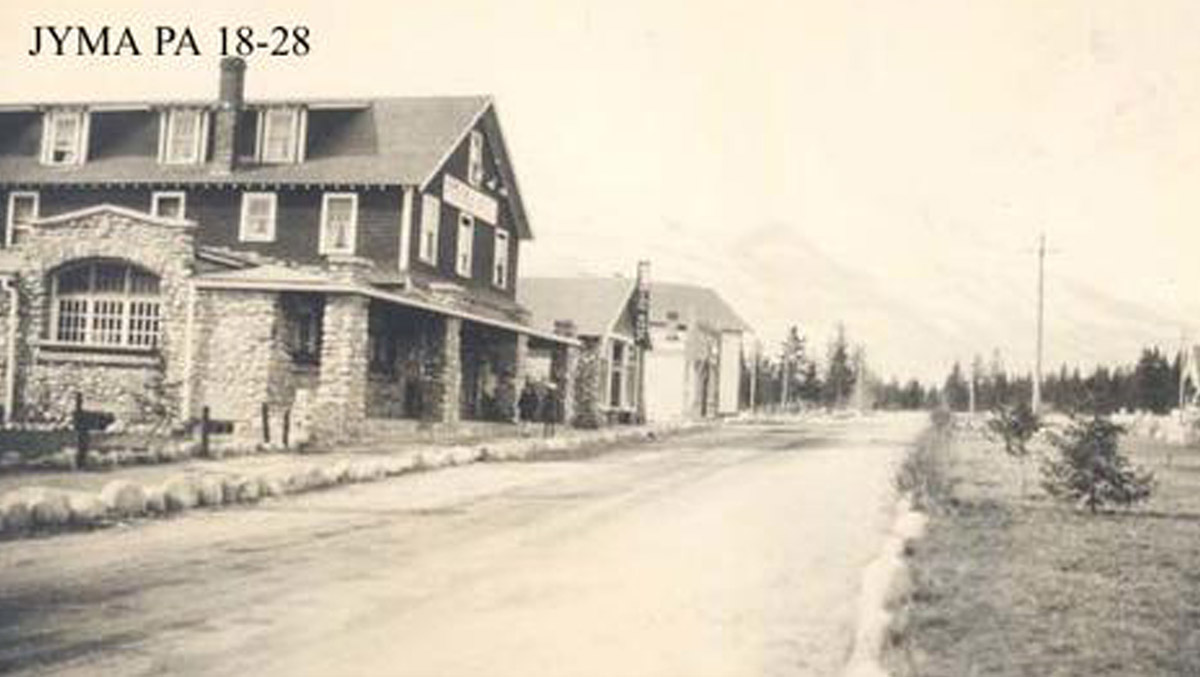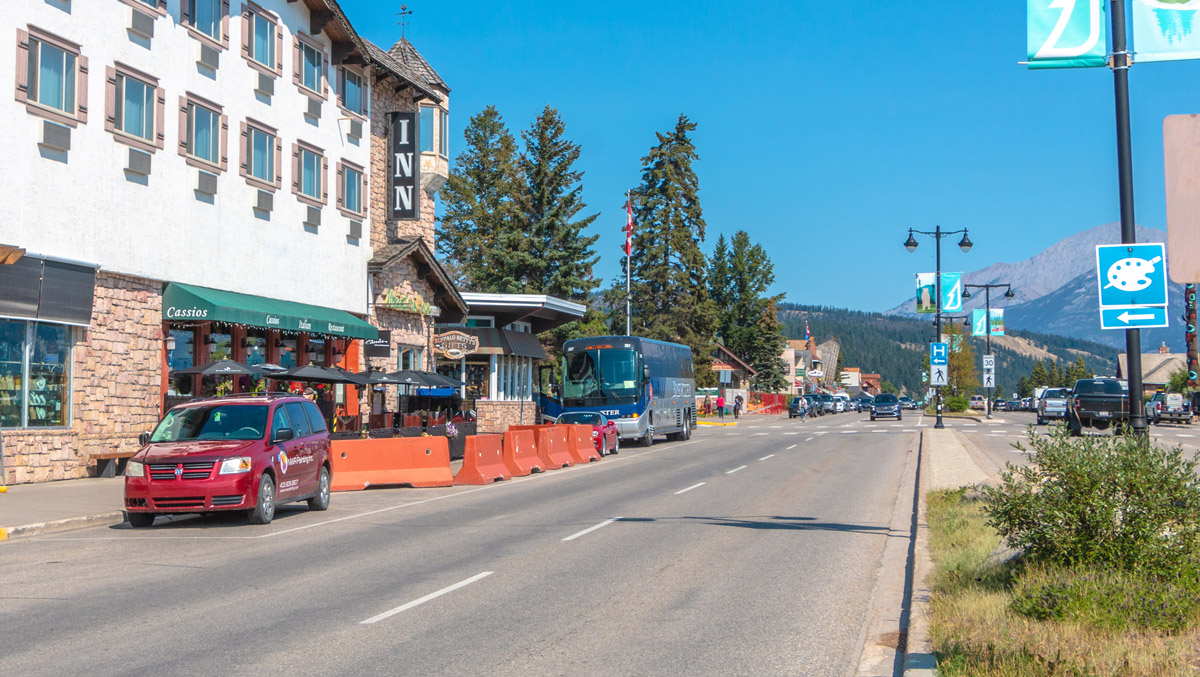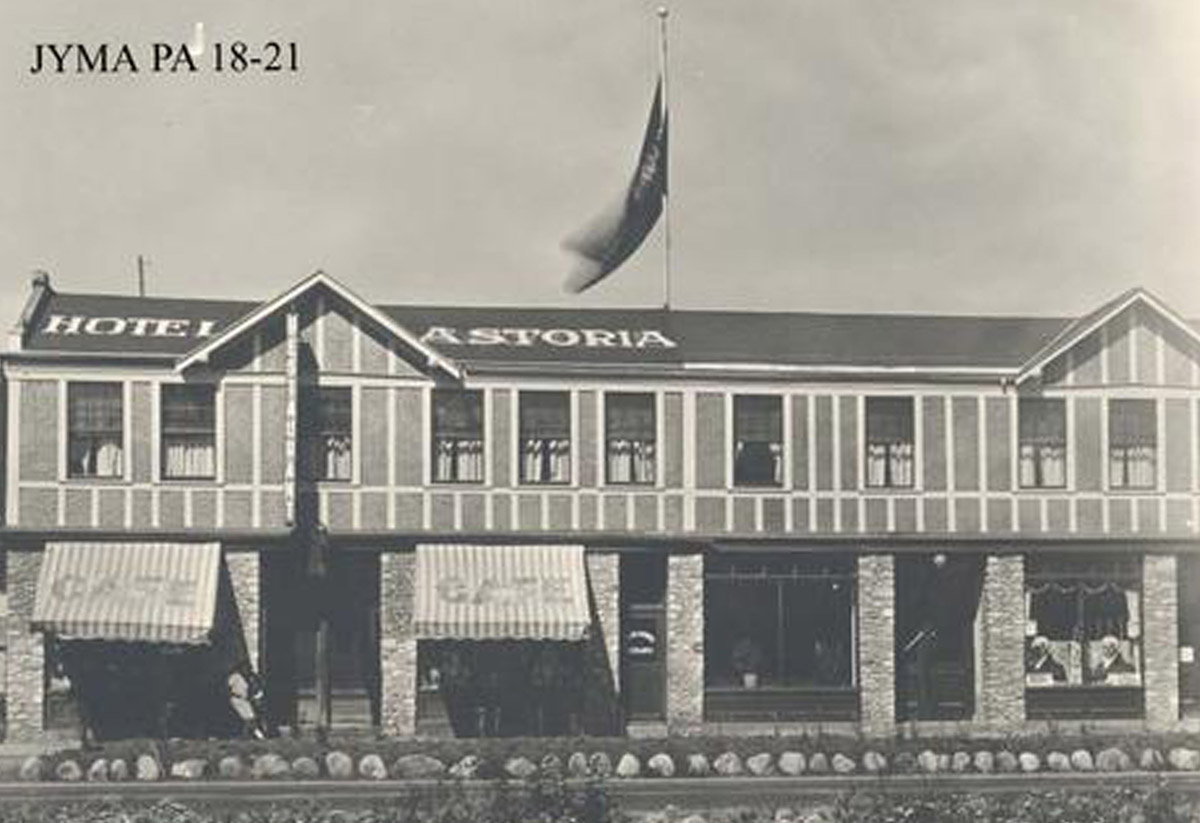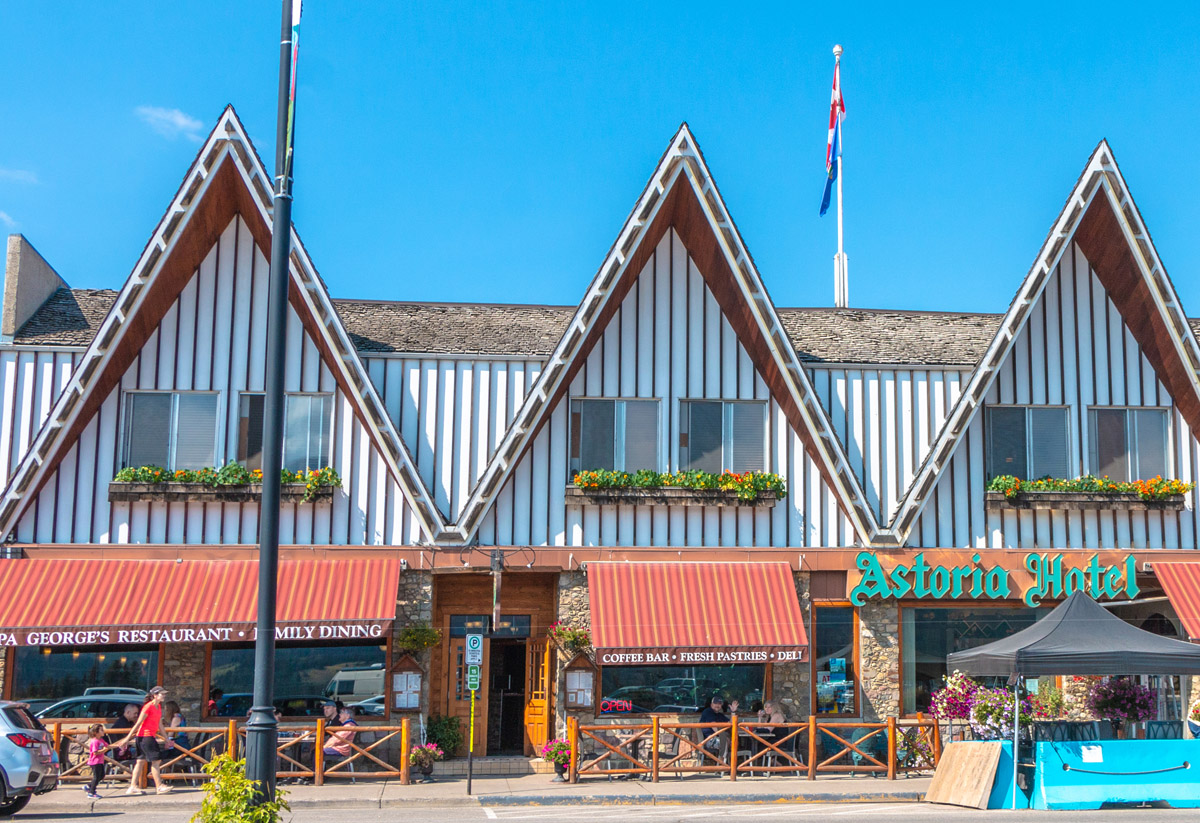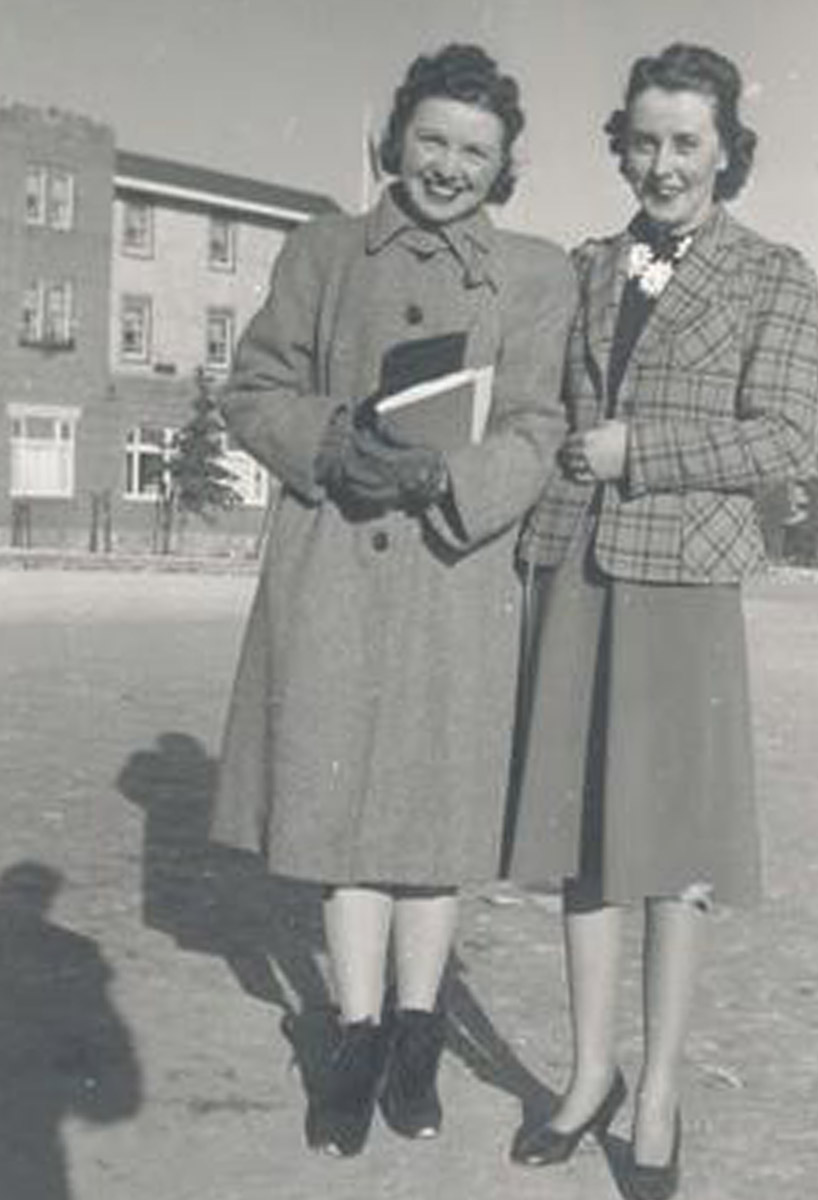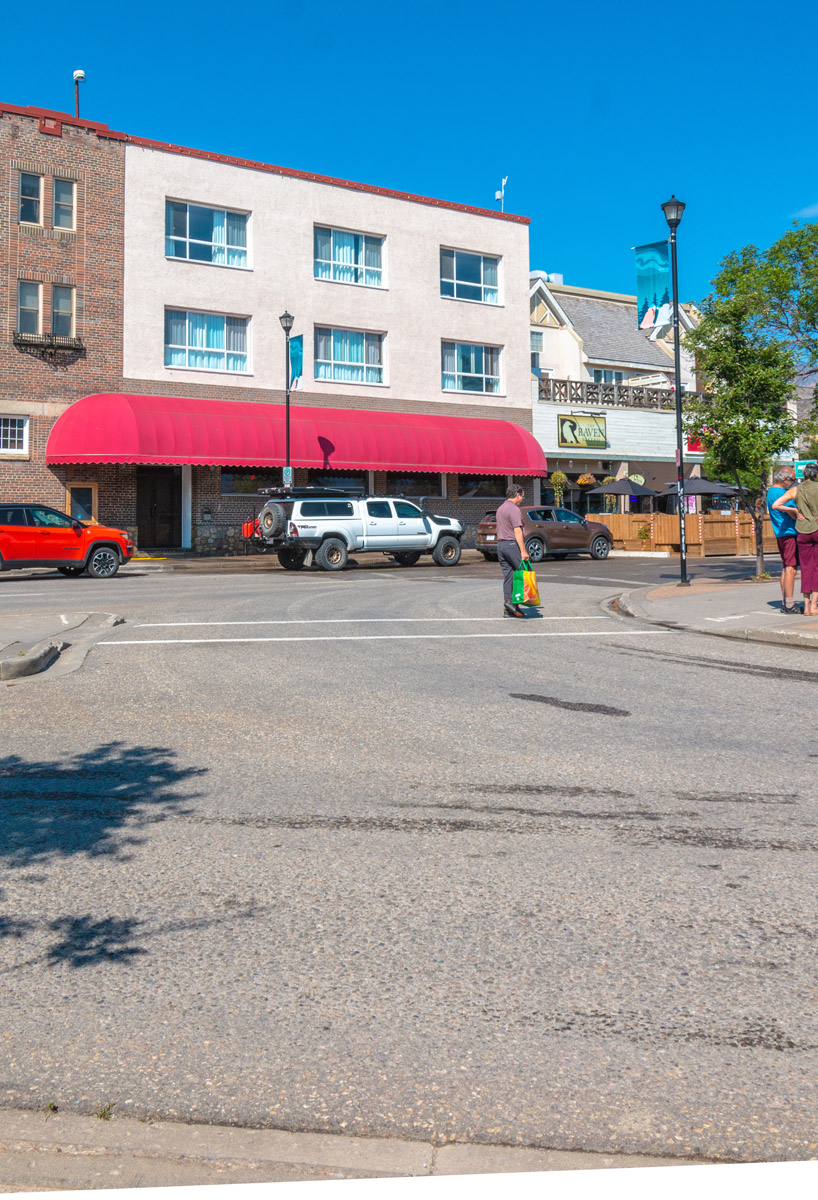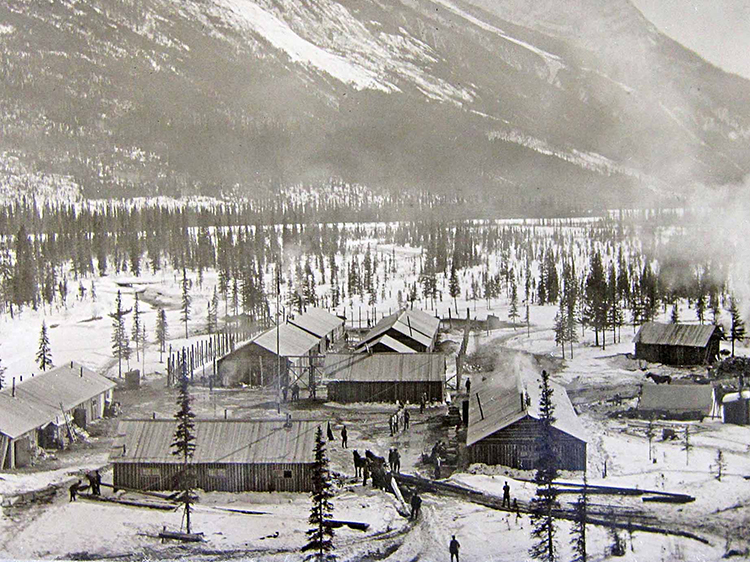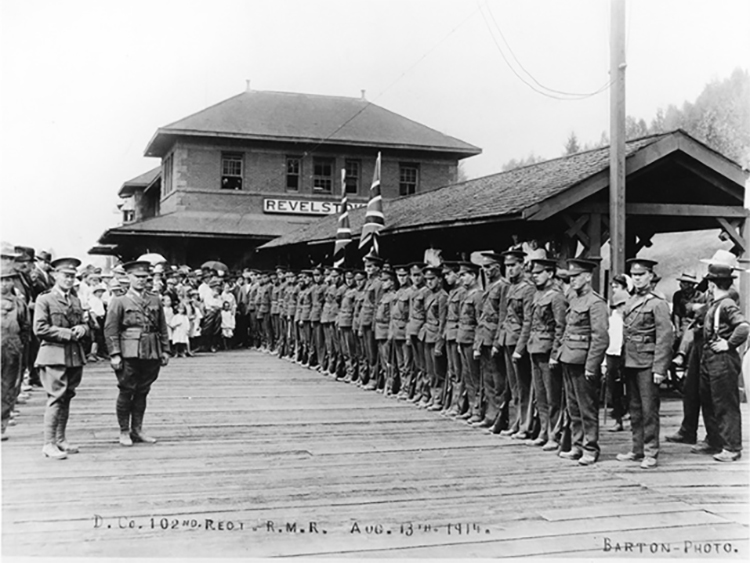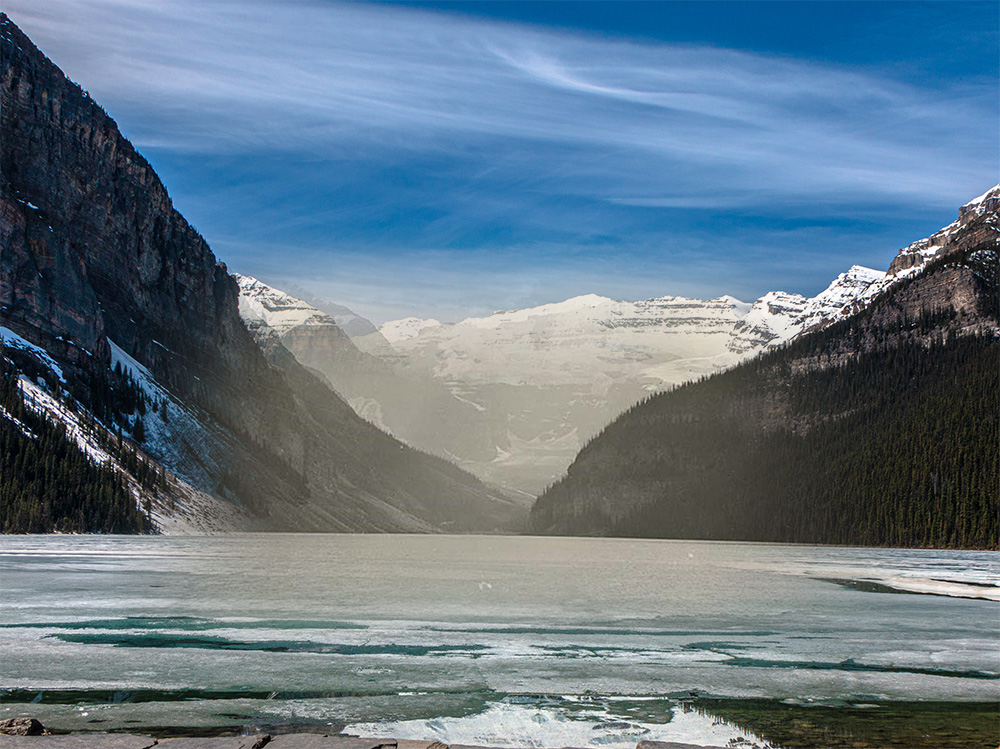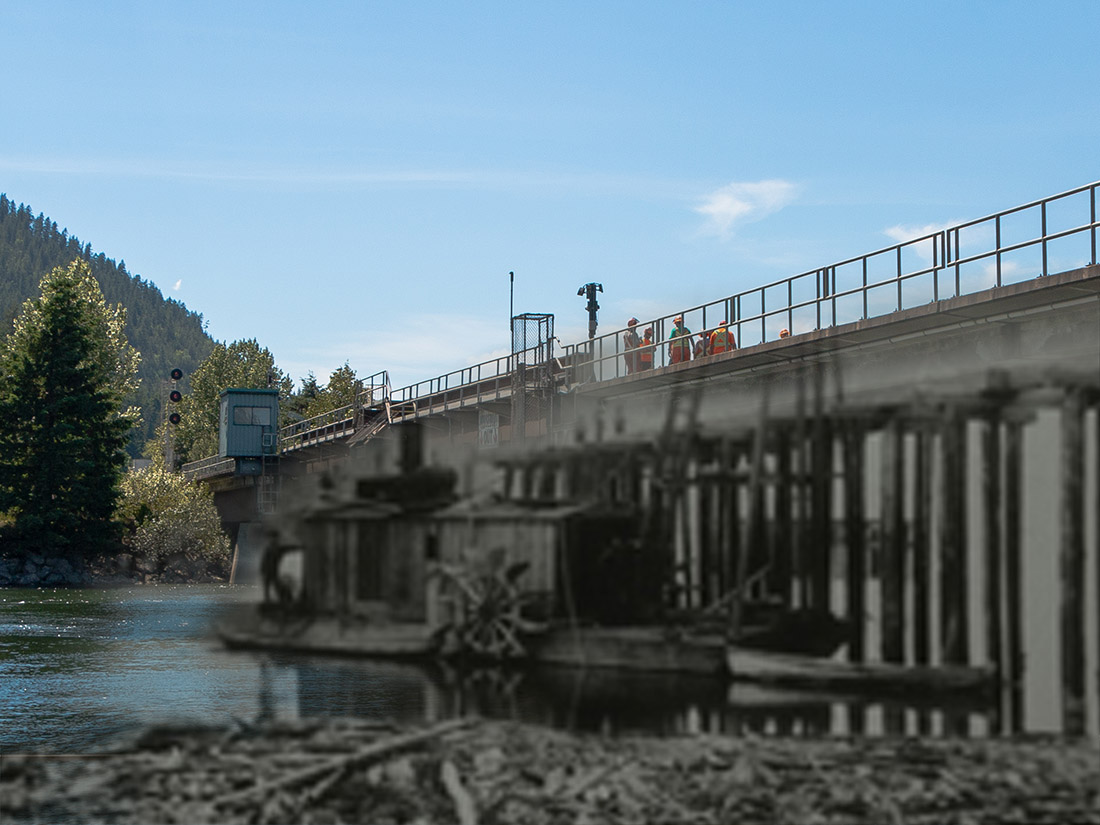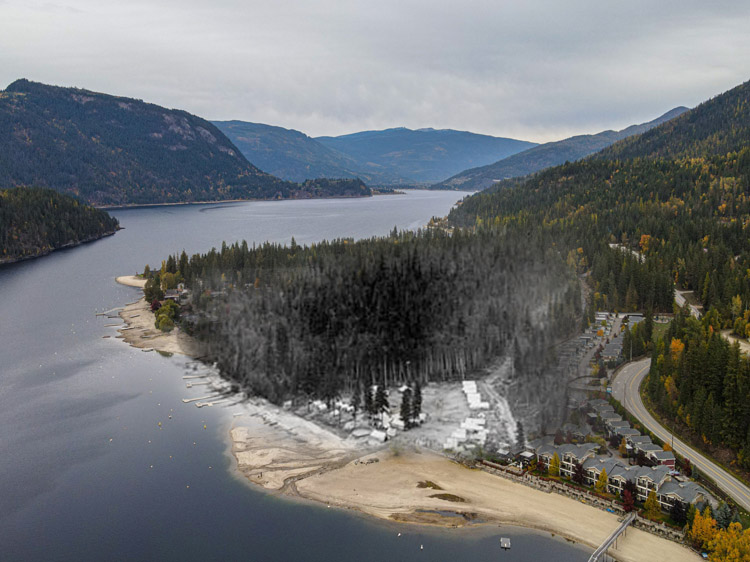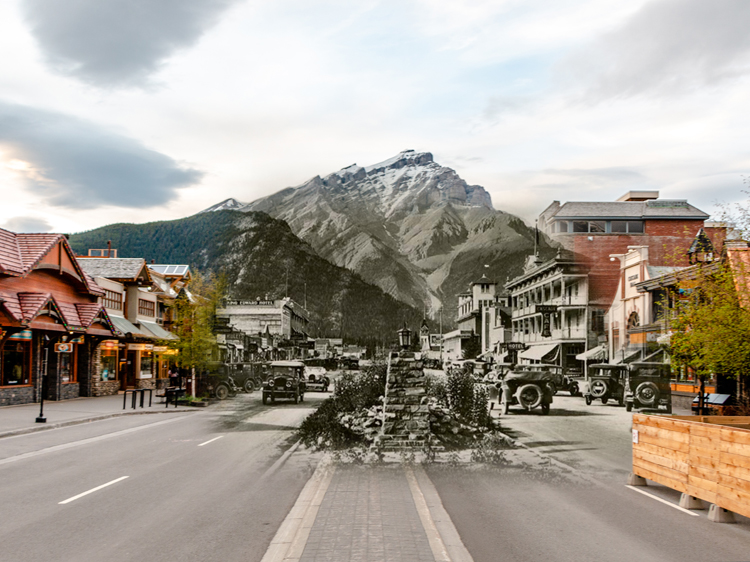The Rocky Mountains are a relatively young mountain range, having formed around 75 million years ago and creating dramatic jagged peaks soaring into the sky. The place we now know as Jasper is located at one of the passes through this formidable wall of rock. It has been the traditional territory of many Indigenous groups since the end of the last Ice Age, some 10,000 years ago. Until recently those living on the eastern side of the region were several Athabaskan-speaking peoples, while those on the western side were Secwepemc. More recently Cree, Stoney-Nakoda, and Metis peoples have come to live here too. In the early 1800s a European fur trading post was established a little ways north of the modern townsite that was known as Jasper House, after one of the men who operated it. It would later be abandoned when the fur trade petered out in the late 1800s. Then in the early 1900s a railway was built through this pass with a siding built here called Fitzhugh. The settlers couldn't help but be enraptured by the stunning scenery, and in 1907 it was protected as the Jasper Forest Reserve. The name was extended to the small townsite of Fitzhugh, which was renamed Jasper. In 1930 the Forest Reserve became Jasper National Park. During the First World War a number of so-called enemy aliens (who were mostly Ukrainians) were interned and then sent to do forced labour for the Dominion Parks Branch, who wanted to build up the infrastructure of Canada's national parks system. In Jasper they worked in appalling conditions to build a road to Maligne Lake, along with other tasks. This internment camp is the subject of an upcoming walking tour we will be launching here. During World War II a secret project called Operation Habakkuk tested the seemingly bizarre concept of a giant unsinkable aircraft carrier made of a mixture of ice and sawdust called pykrete. Tests were undertaken at nearby Lake Patricia in 1943, just outside of Jasper. The project soon abandoned when it was realized that the cost of building such a ship would be exponentially greater than a normal aircraft carrier. Some of the pictures in this photo set are from that fascinating footnote in military history. Today Jasper National Park, though a bit less well known than Banff, offers some of the best outdoor recreation in Canada, and certainly some of the most gorgeous mountain scenery on earth.
This project has been made possible by a grant from the Endowment Council of the Canadian First World War Internment Recognition Fund.
We respectfully acknowledge that Jasper is located in Treaty 6 and 8 as well as the traditional lands of the Anishinabe, Aseniwuche Winewak, Dene-zaa, Nêhiyawak, Secwépemc, Stoney Nakoda, Mountain Métis and Métis. We acknowledge the past, present, and future generations of these nations who continue to steward the land.
Donate Now
If you enjoyed this free content, we ask you to consider making a donation to the Canada-Ukraine Foundation, which is providing urgently needed humanitarian aid to Ukraine.
The Ukrainian people are heroically defending their homeland against a genocidal war of Russian aggression. The humanitarian situation is critical and the needs immense. 100% of all donations made through this link go directly to supporting the people of Ukraine. Recently funded initiatives by the Canada-Ukraine Foundation include demining and removal of unexploded ordnance, and the evacuation of thousands of deaf people from the warzone.
Tours
Explore
Jasper
Then and Now Photos
Jasper Rooms
Jasper Yellowhead Museum and Archives PA 18.18
Ca. 1905
Two buildings part of the Jasper Rooms Hotel, which are today the Athabaca Hotel.
Cannon on Connaught Street
Jasper Yellowhead Museum and Archives PA 18.85
Ca. 1910s
An artillery piece has been put on display on Jasper's Connaught Drive. You can see the McDowell Store in the background. The gun is likely a captured German light field gun, one of over 900 that were captured by Canadian troops during the First World War and then distributed as trophies to communities across Canada.
Admin Building in Winter
Jasper Yellowhead Museum and Archives PA 18.33
1913
An early view of Jasper's main administration building in wintertime.
Totem Pole
Jasper Yellowhead Museum and Archives PA 18.60
Ca. 1915
A Haida totem pole has been erected in the middle of Jasper.
The Main Street
Jasper Yellowhead Museum and Archives PA 18.22
1926
Businesses on Connaught Drive in the centre of Jasper's townsite. Visible businesses include Shaws, Jackman's Store, Jefferies, Scrivens, the Cavell Restaurant, Cook's Bakery and McDonald & Mason's Clothing Store.
Park Administration Building
Jasper Yellowhead Museum and Archives 69726
1929
A frontal view of the Jasper National Park administration building.
Jasper National Park Administration Building
Jasper Yellowhead Museum and Archives 997.07.77.12
1930
A quarter view of Jasper National Park's administration building.
Cross Country Skiers
Jasper Yellowhead Museum and Archives 994.45.134.2
1940
A group of skiers prepare to start a race on Connaught Ave.
Creating Frames
Jasper Yellowhead Museum and Archives 84.32.191
1943
Carpenters are at work creating wooden frames on Patricia Lake for Operation Habbakuk.
Project Habbakuk
Jasper Yellowhead Museum and Archives 84.32.147
1943
Men working on Project Habbakuk at Patricia Lake just north of Jasper.
The Jasper Yellowhead Archives describes Project Habbakuk thusly:
"In 1943, the National Research Council coordinated the top secret construction of Habbakuk, a 1-to-50-scale model ice and sawdust ship, to test the feasibility of protecting North Atlantic wartime shipping lanes with a fleet of massive, unsinkable aircraft carriers. The aircraft carriers would be at least 600 metres long, 90 metres wide and up to 60 metres deep. The vessels would weigh two million tons, be equipped with 26 electrically driven propellers, reach a top speed of seven knots, and be capable of housing two thousand crewmen in metal compartments. Habbakuk began with a heavily insulated wooden frame. Army personnel then added to its hull large blocks of ice mixed with sawdust (to add strength). On-board refrigeration units kept the ice from melting. The National Research Council proved that the ice-hulled ships were technically possible to build. But the cost of material and labour to construct such ships made the concept impractical. Late in 1943, refrigeration equipment was removed from Habbakuk. Its resistant ice hull melted and the wooden superstructure of the ship sank to the bottom of Patricia Lake. A plaque at the shoreline, and a commemorative cairn on the bottom of Patricia Lake, near the wreck, explain the history of the project."
Rebuilding Mountain Motors
Jasper Yellowhead Museum and Archives 990.11.98
1943
No time was wasted in rebuilding Mountain Motors after it burned down.
Mountain Motors on Fire
Jasper Yellowhead Museum and Archives 990.11.95
1943
Mountain Motors is seen here burning down.
Mountain Motors Still on Fire
Jasper Yellowhead Museum and Archives 990.11.94
1943
Mountain Motors is seen here burning down.
Habbakuk Abandoned
Jasper Yellowhead Museum and Archives 84.32.252
1943
A photo of the strange vessel made of pykrete after the project had been abandonded. The test ship was allowed to sink and remains today as a small wreck on the lake's floor just a short distance from where this photo was taken.
Bing Crosby Visits
Jasper Yellowhead Museum and Archives 70689
1947
Bing Crosby during a visit to Jasper.. Crosby has been called the first multimedia star, thanks to his success as an actor, musician, and is considered one of the first global cultural icons. He visited Jasper many times in the late 40s and 50s after filming a movie here and falling in love with the place.
This photo was taken outside the Hudson's Bay Company store, and you can see the Athabasca Hotel in the background.
The Robson Family
Jasper Yellowhead Museum and Archives 993.37.41b
Ca, 1930
The Robson family posing for a photo outside their home, which has been preserved as a historic site.
400 Block of Connaught
Jasper Yellowhead Museum and Archives 997.07.314.20
Ca. 1920
A view of the north side of Connaught Drive at the middle of Jasper's townsite. The building at left is now home to a CIBC.
View Down Geikie Street
Jasper Yellowhead Museum and Archives PA 18.30
Ca. 1920
A view down Patricia Street towards the east. Today its known as Geikie Street.
The CNR Station
Jasper Yellowhead Museum and Archives 79084
Ca. 1920s
The Canadian National Railway station as seen from Connaught Drive.
Robson Home
Jasper Yellowhead Museum and Archives 997.07.284.07
Ca. 1924
This excerpt from the archival description from the Jasper Yellowhead Museum & Archives:
"This building is now designated as a historic building and is used by Jasper Tourism and Commerce. It was moved from it's original site to an empty lot on the 400 block of Patricia St. and restored."
Fire Truck at the Station
Jasper Yellowhead Museum and Archives PA 18.8
Ca. 1925
Anearly firetruck and its hose wagon outside the fire hall.
Departing Jasper
Jasper Yellowhead Museum and Archives PA 18.56
Ca. 1925
A pack train with 3 horses and 1 rider prepares to leave the Jasper Rooms.
The Perrier Block
Jasper Yellowhead Museum and Archives 997.07.269.01
Ca. 1930
Several cars parked in front of the building known as the Perrier Block during wintertime.
Pyramid Hotel
Jasper Yellowhead Museum and Archives PS 18.28
Ca. 1935
The Pyramid Hotel on Miette Avenue.
The Astoria Hotel
Jasper Yellowhead Museum and Archives PA 18.21
Ca. 1940
This is the historic Astoria Hotel and the Jasper Cafe on Connaught Drive. Built in 1925, it is one of the original hotels on the townsite.
Women on Patricia Street
Jasper Yellowhead Museum and Archives 69355
Ca. 1940
Two women, identified as friends of the photographer Dora Doyle, pose for a photo at the intersection of Geikie Street and Miette Ave.

